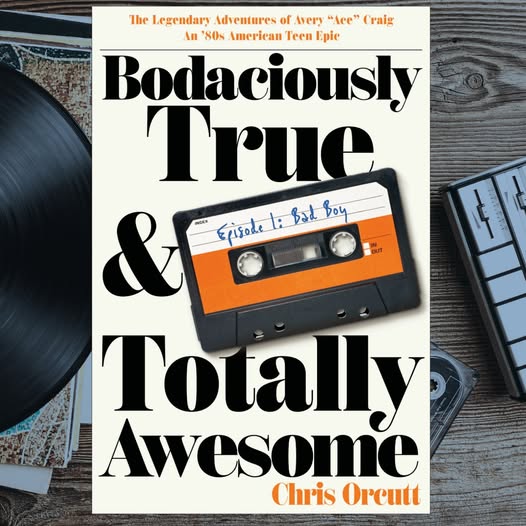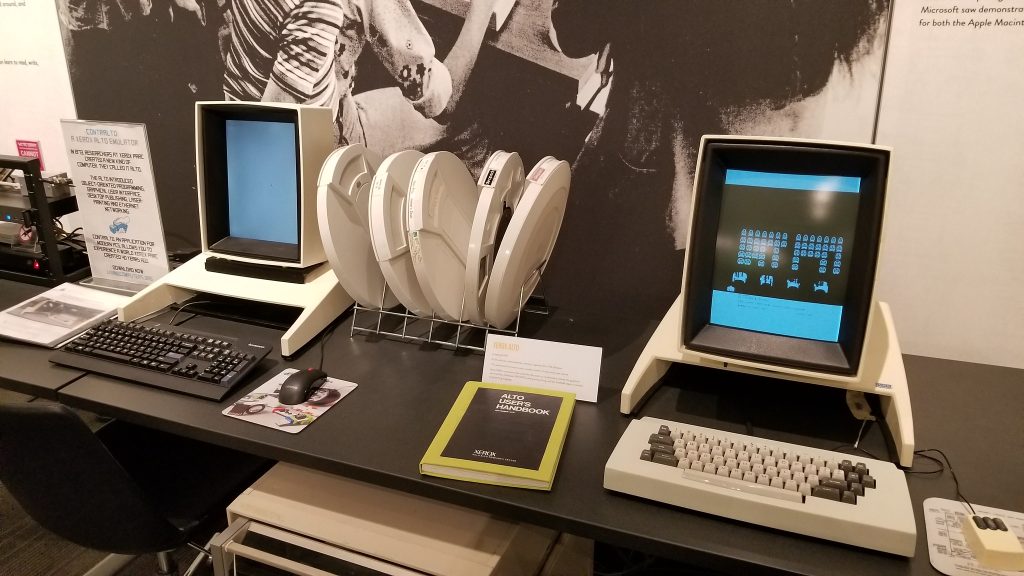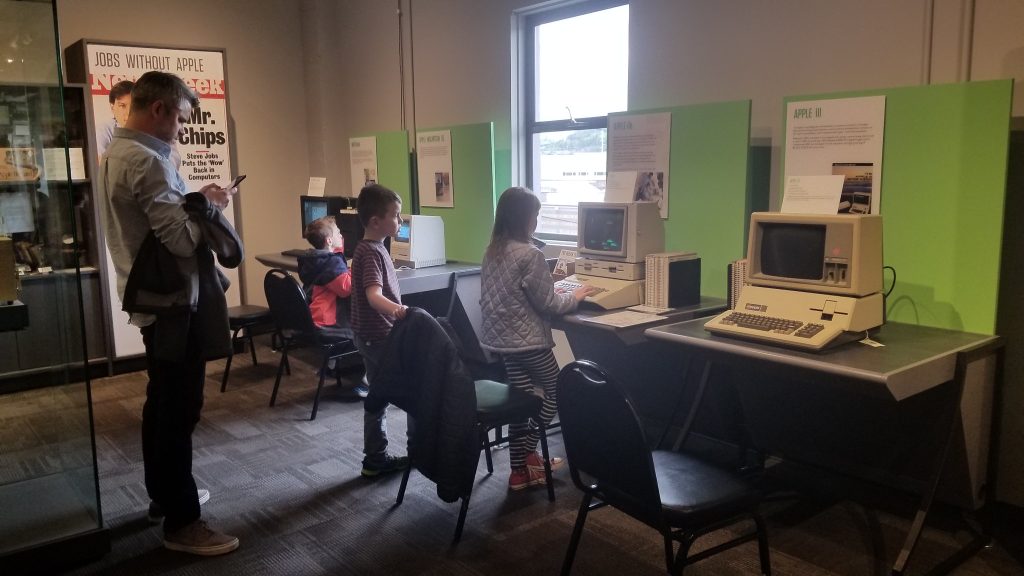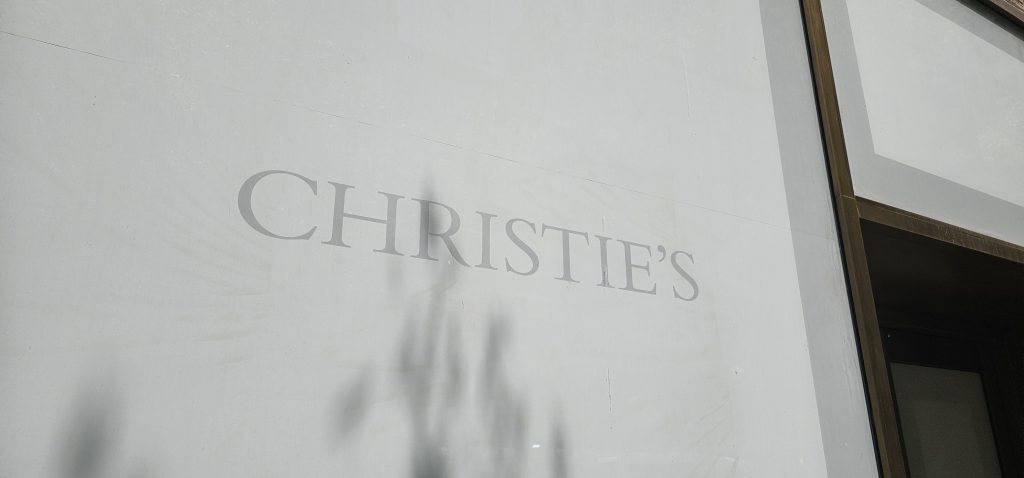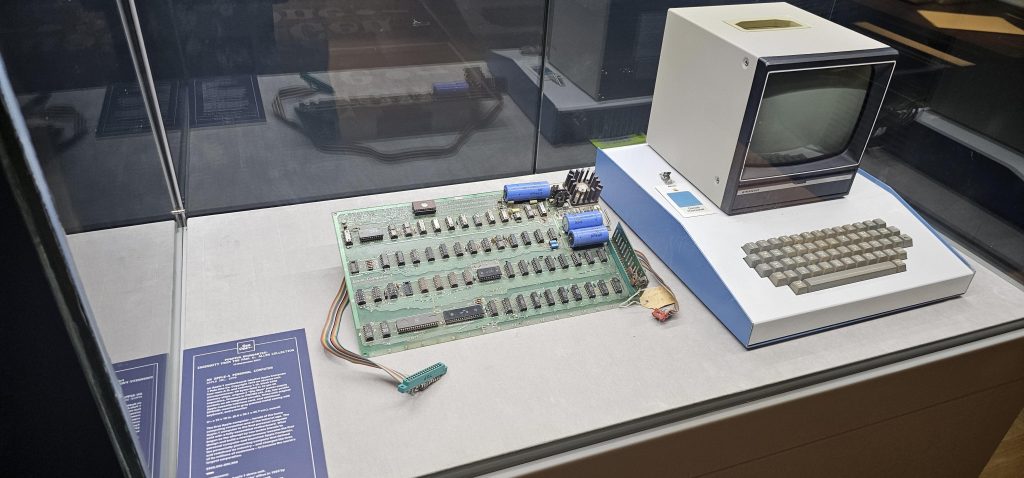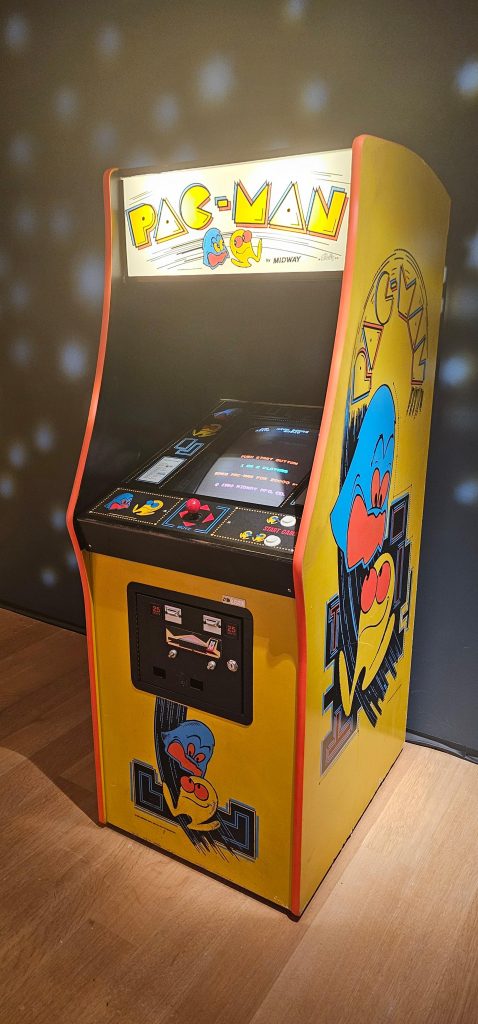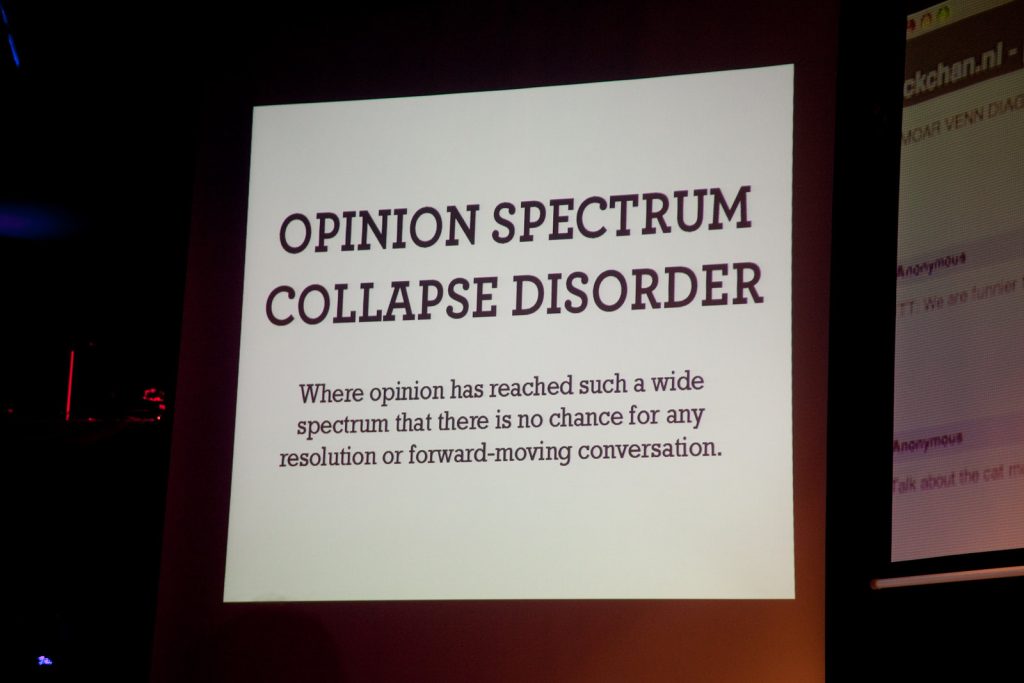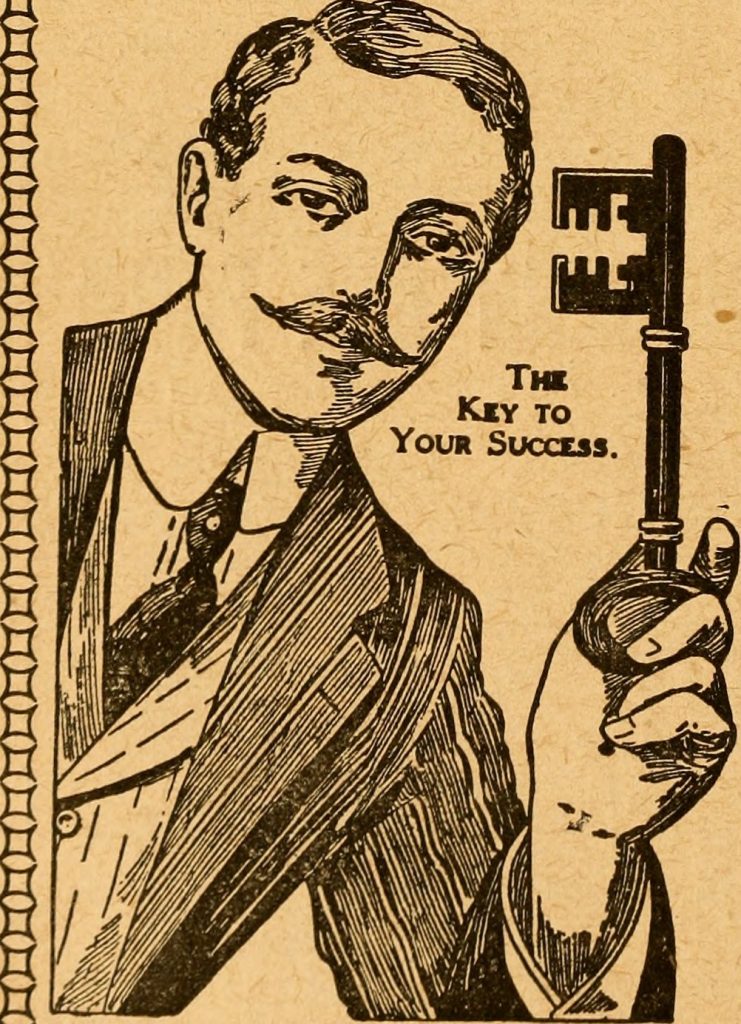| CARVIEW |
Why INIT HELLO even happened is a subject for another time. Today’s subject is also not specifically about the building where it was held, but now’s a good time as any to tell you about it if you’ve never heard of System Source.
System Source is a business sort of business that handles training and IT and does all that office sort of stuff, but it also contains a computer museum, which itself is composed of multiple other museums. It’s like a fun museum turducken.
INIT HELLO was organized rather quickly, months to be specific, and it’s a miracle it all came together so well. This was, in part, not only the effort of the organizers, the folks who dropped some cash to float the costs, and a lot of volunteer labor throwing in – it’s also because the owner of System Source opened doors for an odd, unproven, lumpy event to take place.
That kindness led to a fun little conversation at some point when it turned out the owner of System Source was also on the board of the Vintage Computer Festival, which I’d written about semi-recently.
He and I chatted a little about this and that related to the VCF organization, my interactions with it, and the law of unintended consequences.
Thus, here we are.
While I continue to not attend Vintage Computer Festivals, and my interactions along various lines tells me the inter-organizational structure of the place is prone to misunderstandings and confusion, you shouldn’t punish the attending exhibitors, who do some of the finest work in retrocomputing and have no say or agency in matters beyond their table space.
For many people who harbor love of old machines and concepts, and who are filled with a wish to share their knowledge or collections with a sympathetic and engaged audience, the Vintage Computer Festivals held throughout the United States (and soon Canada) are often their sole opportunity to connect with old (and new) fans of their efforts.
Some of my finest interactions with people who have gone above and beyond to maintain and present technology have happened at VCF-related events – and while I won’t drag them into a sort of paradoxical Jason Scott-attention Devil’s Bargain by mentioning them, I’ll say that I’ve enjoyed their smiles and their conversations. Solid, good people, doing good things: A brimming joy and wonder about these expensive machines converted to toys and educational entertainment about the world they came from.
A good display of computer history doesn’t just happen – it can represent years of careful collecting, precision layout of signs and wiring and explanatory diagrams, and then hauling (at great distance, personal expense, and time) into a waiting empty space at various venues. VCF is not the only place that offers this, of course; but even as one of a fabric of opportunities, it is a not insignificant percentage of the chances these exhibitors have in a given year to meet future fans and collaborators.
Interpersonal conflict is my personal candy, and while it’s a delightful jaunt when the gears turn just so and a truly well-crafted flaming arrow can be directed into unsuspecting machinery, I’ve been led to believe that my essays far exceeded their mark and have caused financial distress. Without diving too deep into research for that claim, I’ll simply say that it would truly make me sad to have some of these families and individuals, just trying to show their home-baked technological wares, be left standing in an underattended hallway or chamber hoping for an audience that seems less populated each passing year.
]]>When we want to amuse ourselves, Chris Orcutt and I calculate out how long we’ve been friends, because the number is massive by most standards and it’s one of our little consistencies through our individual, chaotic lives. The number as of this writing is 43 years.
We are no-holds-barred fans of each other, and of our divergent goals and efforts in our paths. The bias is deep-seated and profound, palpable really. If you’re building up a court case against one of us, the other will not join you, and in fact you may find yourself with a spoon in your neck before the proposal gets out of your mouth. We are bonded and we back each other up.
This round, it’s my turn.
After being literally across the street from the World Trade Center on 9/11/2001, Chris recalibrated his life and career away from (very good) copywriting for businesses and CEOs, and took his previous years as a journalist, and became a full-time novelist, which was always his dream. He’s been doing it ever since.
And not just doing it – excelling at it. His books have sold very well, and it is possible to grab them immediately. That is, a significant amount of times, he has set off on a book writing project, spent the years doing the drafts, refining, editing, and then publishing it where others can enjoy it. His books exist. The ratings are excellent. The boy can write.
In his 40s, he found himself at a bit of a crossroads.
He’d written some solid mystery novels, a number of anthologies, and more. And while writing is everything from frustrating to solid-state euphoria, and creating books was his heart and soul, he didn’t want to go into the ground having made “a bunch of books”.
He wanted to make something substantial. Something you could have an opinion on, but that opinion couldn’t include the words “slight” or “okay”. A piece of work you had to at least take off your hat for a moment and mutter “mother of god” before either reaching for it, or backing away. An accomplishment.
Ten years later, he’s there.
This is ten years of no nights out, scant visits to family and friends and events, and long walks with Dashiell the Dog in parks and trails working out the endless puzzles of a nine-part novel series.
Nine parts! Nearly two million words! I struggle to give context to this sort of dedication to the project. Chris has estimated he’s spent at least 30,000 hours over the decade writing the novel, but we all know you have to count all the time considering possibilities, discarding approaches, suddenly realizing you’ve been swimming laps but were deep in a scene.
I prefer percentages: Chris has spent 20 percent of his life on this project.
If nothing else, acknowledge the effort. Coming to the end of a project this massive, this involved, this concentrated diamond of goal, stands among very few who set off on such a journey. He fuckin’ did it.
I will refrain from describing the depths Chris went to in making his novel, which takes place in the 1980s, as accurately as possible. But one small overlap with me naturally sticks in my mind:
In the book, his main character Avery Craig writes a letter on his Macintosh. Chris wanted the feel of the keyboard and the experience of a real Mac to guide his words, so he asked me, and I arranged, to have a vintage Mac, carrying case and all, available to use to make it authentic:
I respect the relentless hustle to do right by his project, to take the full walk around, to not guess but research and find out the true and real world he’s bringing together in this monument of printed pages.
Now, like Chris, you stand at a crossroads.
The nine-volume series begins to come out in 2026, with additional books to come out across a timeline. You can close this window and probably hear about the books coming out then, and buy the first one, fall in love with the tale and tell a friend, or just enjoy them however you enjoy your books.
or.
You can help an author of authentic skill, who redirected his laser-like abilities away from churning out noir after romance after adventure tale, who worked on a truly gigantic project, what very well seems to be the first teen epic, properly promote and prepare this series for a proper literary lifespan.
You see, books suffer.
Not from being able to get somewhere after being printed, to sell some copies after being put on shelves or online, to get a bit of an audience after being out there….
…they suffer because they need promotion and support and a hundred little costs to break through the membrane of life’s distractions and cacaphony to gain a foothold in universal awareness.

This novel series is coming out – that’s not a question. It’s done, getting the kind of polish as it goes to printers and gets distributed through various platforms. It’s going to happen. That’s not what Chris and his family and I are asking of you.
We’re asking for people to contribute support to the campaign and efforts to give this book series the respect and treatment it deserves.
The goal is simple: NO CHEAPING OUT.
No using clip art and basic fonts for the covers. No relying on a couple notes here and there to let people know about the project. No avoiding spending money on talented people in the field of promotion and awareness. The plan, evocatively described on their fundraising page, and the result of years of planning, is to put the same sweat equity into the promotion and sale of this project as was put into its creation, year in and year out, up to this point. The plan, taking up a whole wall of a hallway in their home, is to spend five years on this, half of what it took to make the series in the first place.
And to do that, they need funding. People who are looking to drop not just a few bucks expecting a printed series in their mailbox or inbox in a year or so…. but people who go to the page the Orcutts set up, read the pitch and plan, and said “OK, now this is quality.” People who will, impulsively or after great amounts of thought, put serious coin in the Orcutts’ hands with the understanding they are using this money to bring the all-important promotion of this life’s work to the greatest audience they can find.
The Orcutts will be doing this, what they promise on their page. I will personally refund your money if they don’t. That’s how much I believe in them.
They’ve described the whole project in detail. They’ve laid out the plan. They’ve set out all the good silverware and they’re inviting you in to see what they’re going to do. You either will go “well, uh, see you when it’s out” or you understand, from a person who himself has spent years and years on projects, that now is the time to be shockingly generous. Your contribution will have great ramifications for what this series can do to bring attention to what it is.
Just do it. Tell them I sent you.
]]>Let’s do a little of both.
The proposition of the Living Computer Museum was initially simple, and rather amusing in a Slashdot-baity sort of way: You could apply to get an account on a real, actual ancient Mainframe hooked up to the Internet, which meant you could literally connect into real, actual ancient hardware. I assure you that to a segment of the population, this is an irresistible proposition. It’s also, ultimately, one that even the most ardent fans of “how it was” will leaf away from, because mainframes are their own wacky old world, like using a taffy-pull hook, and appeal on a day-to-day basis to a relative handful of die-hards.
But in 2011, the Living Computer Museum announced itself with the kind of slick webpage that promised computer history buffs a new wonderland.
There’s a lot to take in with this verbiage, but let’s keep going, for now.
In 2012, the Living Computer Museum opened its actual, physical doors to the public in Seattle. A year later, I visited. It was rather nice. I got a grand and lovely tour by some very polite and friendly people, some of whom I’d known for years. The rooms, well appointed, well-lit, and in the case of the machine rooms, done to a sparkling arrangement, clamored for my attention and approval.
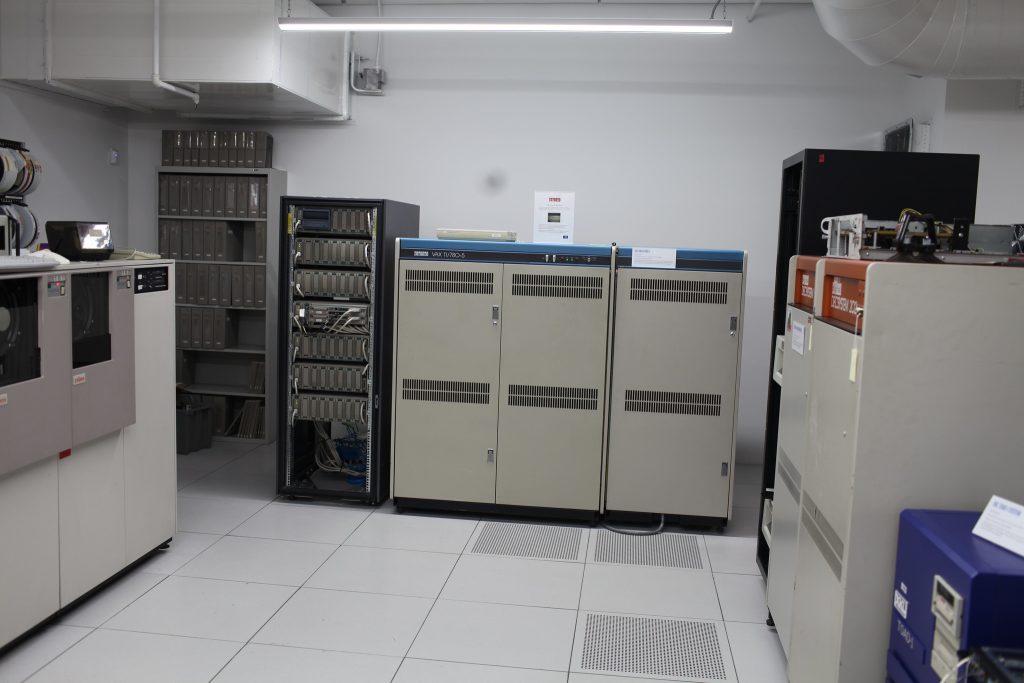
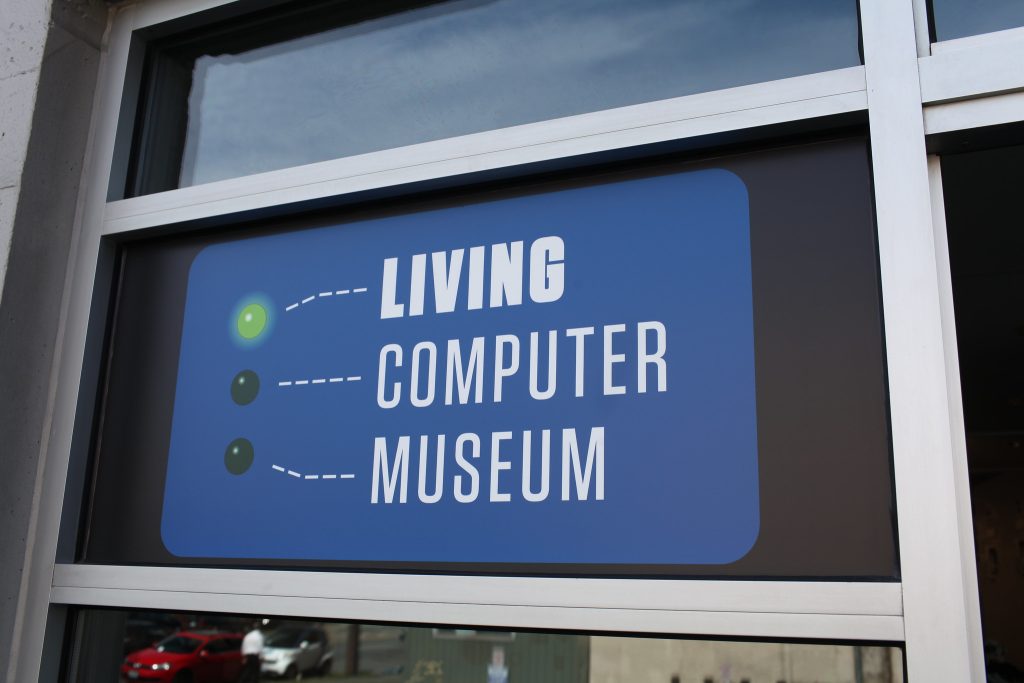
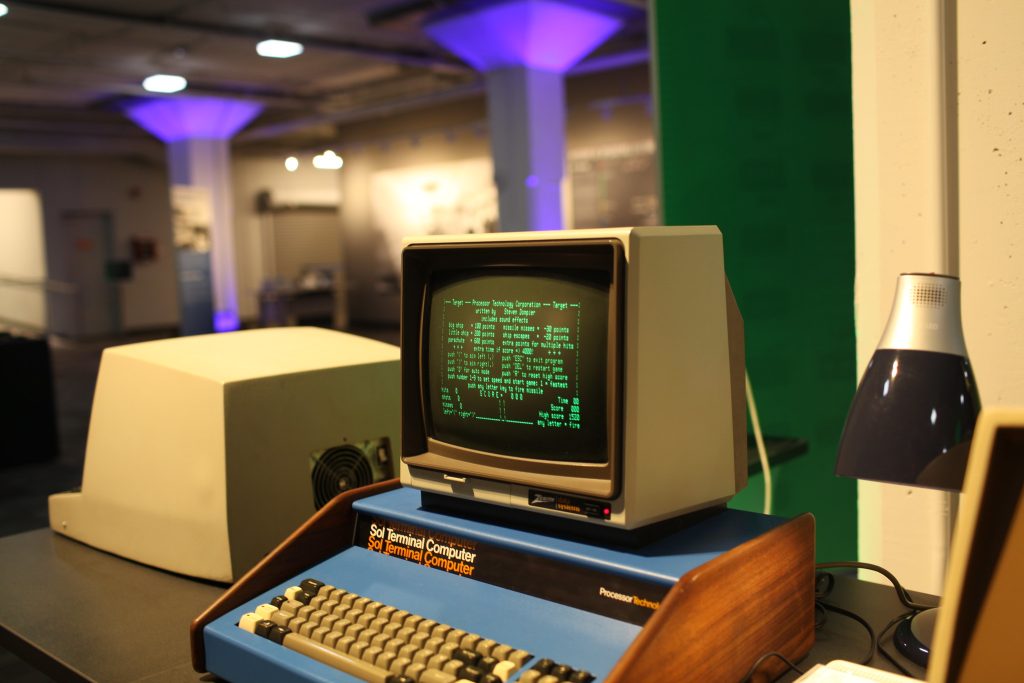
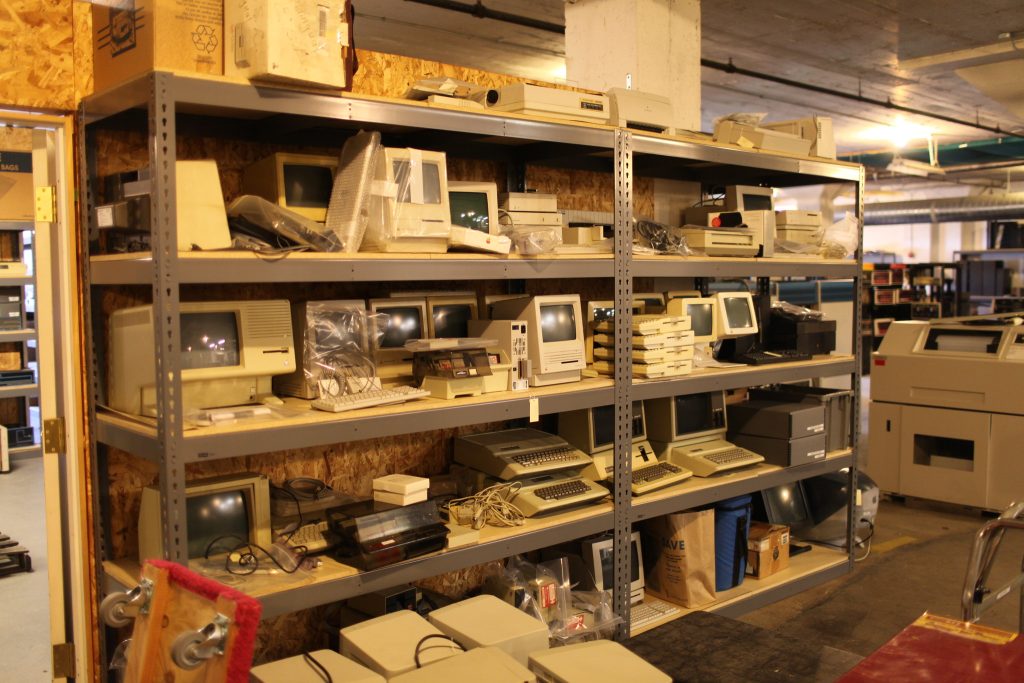
There were computer museums for years, decades before Living Computer Museum, scattered among the United States and the world. I’ve been to many of them – sometimes as an honored guest and backstage VIP, and sometimes just because I hastily read my “find me weirdo geek stuff” Google Maps results and negotiated public transit to walk into the door and walk around like a strutting mayor to see what’s what. In that pantheon, I would put LCM in the realm of “very well appointed, especially the mainframes” but not in the realm of “nobody, ever, has ever tried anything like this”. Just off the top of my head, the Computer History Museum in Mountain View has brought not just mainframes and historical computers back from oblivion, but hosted events in which their maintainers and figures have gotten a chance to get their stories on record.
Still, one couldn’t argue with it – the LCM was a solid new outpost in Telling Computer History, and it was on my shortlist of potential homes for materials I might donate in the future. I had a lovely conversation with a member of management about how they maintained functionality and also what their contingencies were for any sort of “endgame” that might befall the endeavor. He assured me they had storage aplenty, in the extremely unlikely event they had to face a closure. Ultimately I didn’t donate my materials there, simply because I found nearer geographic or mission-aligning homes.
My next, and it turns out last, major visit to the Living Computer Museum (outside of a few drive-bys) came in 2018, when I spoke at an event being held there. This gifted me with a chance to see how things had changed in 5 years, and how they had.
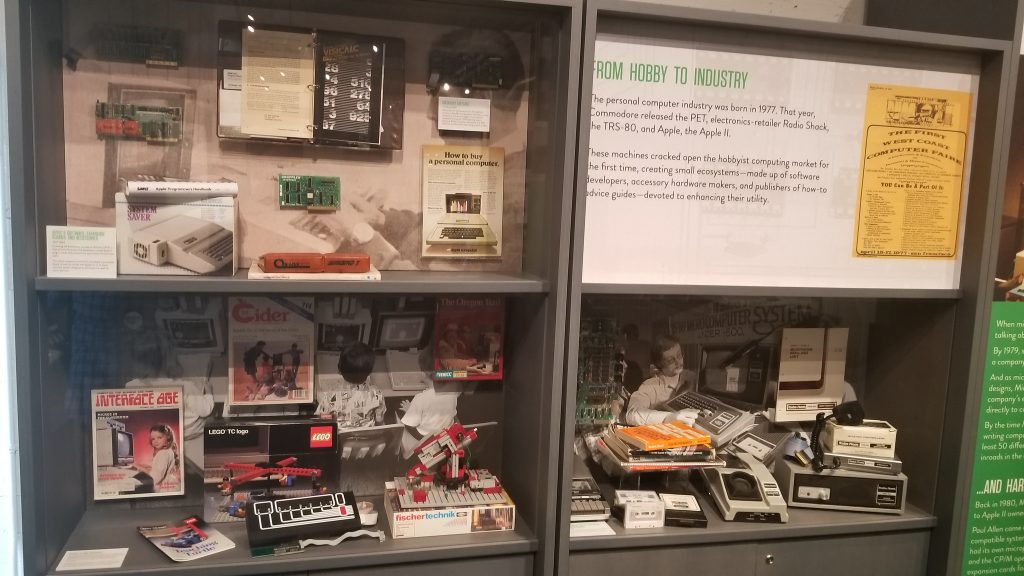
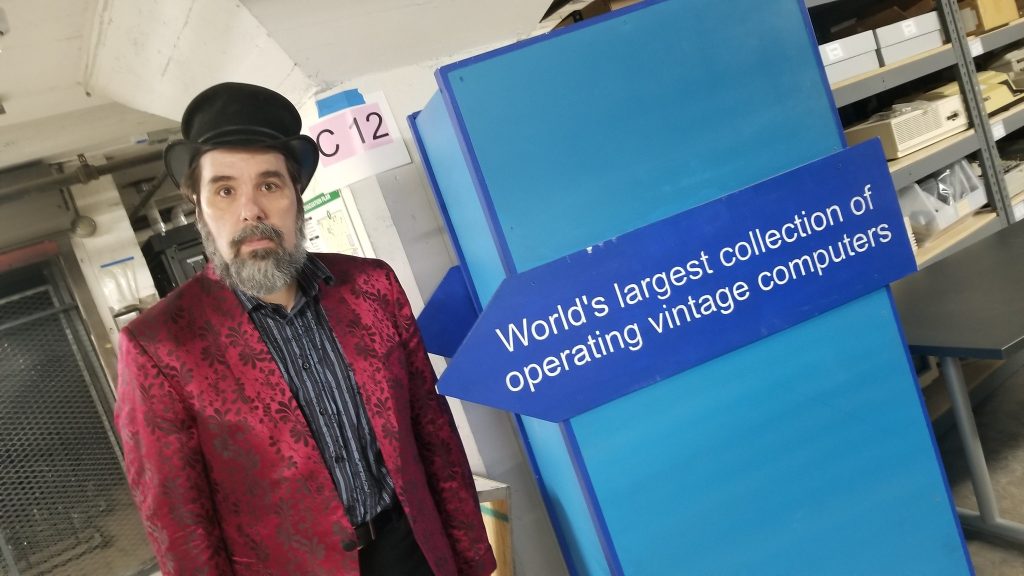
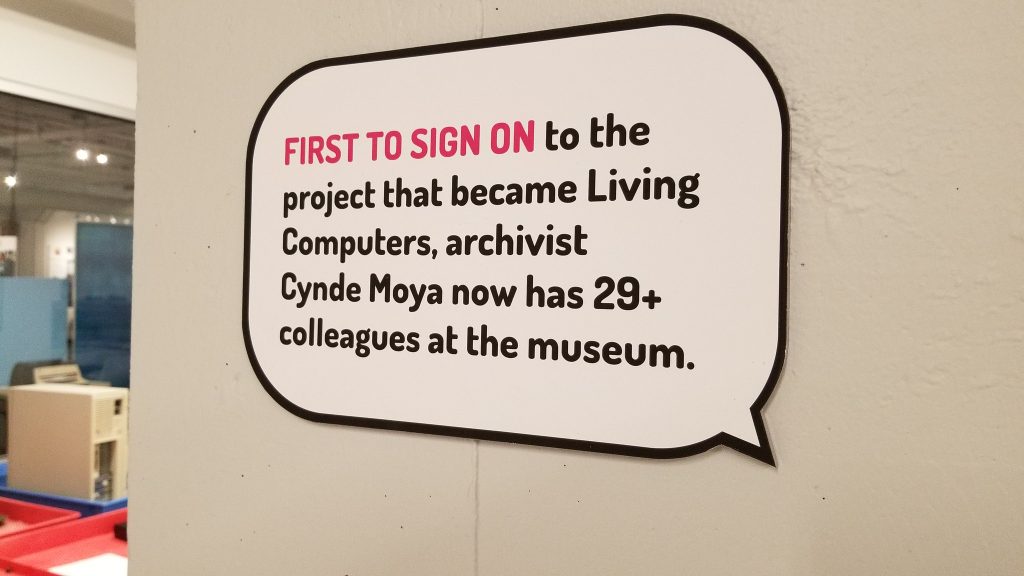
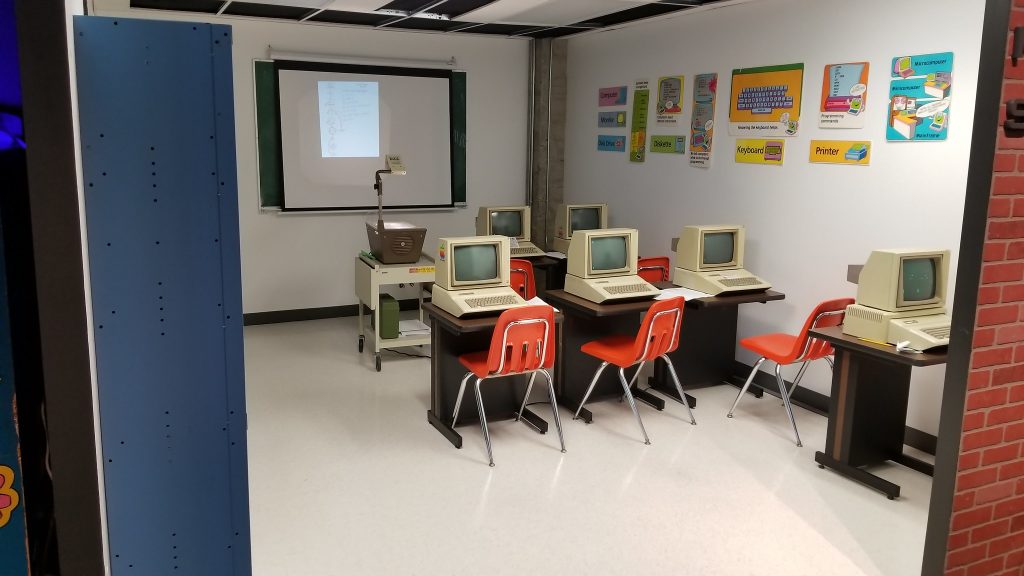
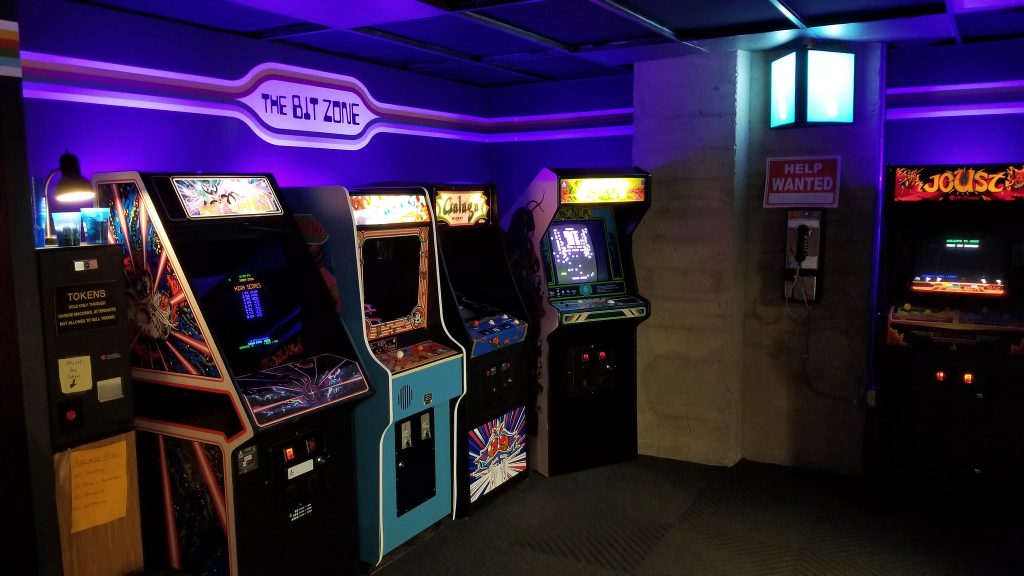
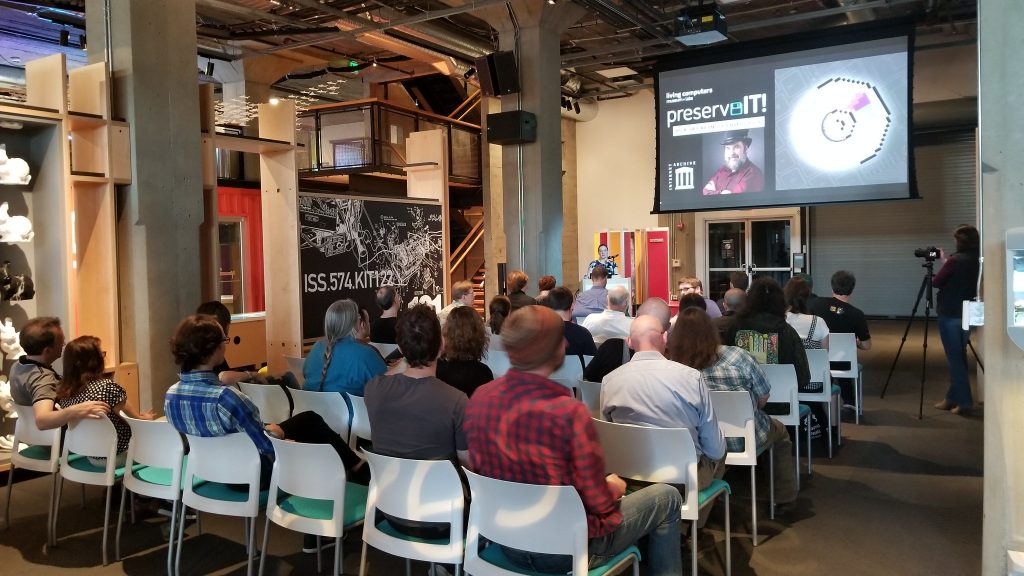
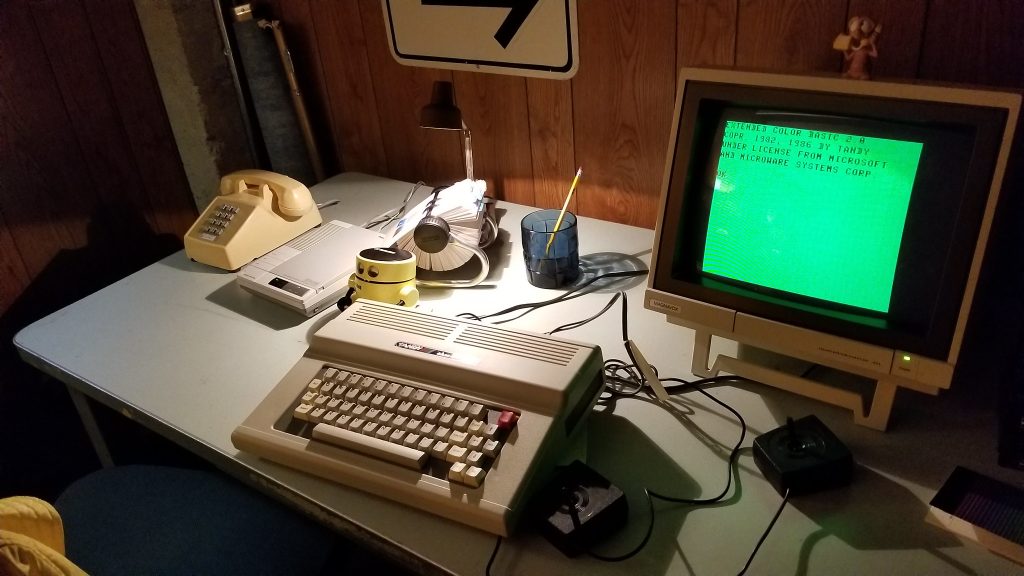
Here, then, was something approaching a dream. We had the display cases of technology and the clean carpets and cathedral ceilings of available space, filled not just with computers on desks but entire computer-related environments: classroom, arcade, basement, that showed youngsters what sort of context these computers had lived in. I met Cynde Moya, who had been described to me years earlier as a hard-nosed disciplined caretaker of the materials, and who turned out to be everything they said except hard-nosed – a truly dear overseer of things physical within these walls.
This was April 2018. I lived in the world I live all the time: full of hope, equally full of expectation of doom. But hope was winning.
In October of 2018, Paul Allen was dead.
I suppose everyone has opinions on billionaries, their position in the world, what they represent, and maybe almost everyone has, spoken or unspoken, an awareness that the level of money billions represents disengages you, whether you think so or not, from humanity.
I mean, sure, they cry, laugh, stub their toe, wonder if that’s rain coming, get surprised when the killer’s revealed in a well-done noir thriller. But there’s this cloud of wealth that is ever-present and depending on how it is maintained, or manifested, it slowly bleaches out the edges of living until you realize there is a shocking serenity in their countenance, a noise-cancelling blur that surrounds them, because there are always people whose job is to be aware of them and whose job is to ensure the serenity is maintained.
And there’s the sheer spending power of a billion. I’m sure I could toss out a hundred funny examples of the sheer numerical force of a billion dollars. For example, you could have someone buy a 2025 Subaru Outback, itself the rough amount on the lower end (nationally) of a Domino’s Pizza General Manager’s yearly salary before taxes, and push it into a lake. Taking Christmas and the pusher’s birthday off, to run through a billion dollars of Subaru Outbacks would take you 61 solid years.
But that’s not even very accurate. During that 61 years of pushing Subaru Outbacks into a lake (in Neutral, of course, I’m not a monster), the remaining amount of the money not being spent to purchase lake-bound outbacks would actually be MORE. THAN. A. BILLION. You would actually be richer than you started, if you invested it in even the most brain-dead obvious multi-percent-a-year funds, or left it in any bank. That’s because time and space warp around money.
So do people.
In 2018, after getting cancer in 2009 and 1982, Allen got it again, and this third (public) bout with it ended him, at age 65. His net worth at the time of his demise is the kind that publications who make it their business to will guess at, and the guess sat around $20 billion. Everyone has kind of accepted that, but it’s not really important if it’s $50, $15 or $5 billion. It’s a lot of money.
With his billions, over the decades, Allen owned or partly owned three sports teams, at least 10 companies ranging from airplanes, scientific research, media, and space flight. He owned massive real estate, a movie theater, threw buckets of cash at schools, the arts, and ultimately, a few museums.
To manage it all, he had a company whose purpose was to manage the money, because he wasn’t going to do it himself. The company’s name is Vulcan, Inc. Even after divestment and shutdown after Allen’s death, it has 700 employees. It is one of the largest trusts in the world. It is also now called Vale Group, but I’m going to keep calling it Vulcan.
Vulcan, a company whose job is to manage money and where that goes, is still quite intensely active as an entity, even with Paul Allen’s death. His sister, Jody Allen, chairs the organization she co-founded with her brother in 1986. This company is absolutely gargantuan in its scope and range, and remember, it is a company that just manages a ton of money – that’s the company’s entire purpose.
I wish to take a short moment to not demonize Jody Allen. As the remaining sibling in charge of this company, functionally working through her brother’s holdings, many of which she clearly had no interest or extant position in, and doing so for six years and counting, can’t be anything else than the strangest mixture of pain and endless complication. The $20 billion she’s now in charge of might soften the blow, but likely not by much.
And I apologize for the whiplash here. I’m not overly interested in going down the paths of describing what Jody should be doing, or what her responsibilities are. I am not privy to whatever deep law and lore and functions buried within Vulcan’s iron heart she and her army of people are dealing with, that six years later they are still slowly divesting organizations. I know she has personally called for cullings but I am not informed about the deepest depths of how the aspects of these billions function.
I want to refocus to the fact that Vulcan is divesting itself of the Living Computer Museum.
I want to refocus to the fact that the Living Computer Museum was never a museum.
Look, don’t jump down my throat about this. I’m as shocked as you are.
I didn’t get some inkling from the phone call I had a decade before about potentially donating to Living Computer Museum. I don’t have some spidey-sense about failure or darkness – I just see it everywhere in everything and I treat every day like it’s the one before they find a lump.
If, before it closed, you had made me stand in the center of the LCM and answer whether it was a museum, I’d have happily held up my top hot and shouted “Why yes! One of the finest in all the realms!”
And for all I’d know, it was a museum. There’s no laws on what a thing can call itself regarding being a museum, exhibition, tour, or display. It’s against the law to take money to attend the museum and you get led to an empty lot, sure. But if something has the vestements and affectation of a museum, and you see the big sign saying Museum out front and you go in and there’s displays and staff and events and meetings, you would certainly think it was a museum.
Turns out it wasn’t.
The auction house Christie’s announced it was doing an auction of some of the best portions of Paul Allen’s estate, first with art, and now it would be selling off technology. To fans and studiers of the Living Computer Museum, these items seemed familiar – some of them were on display in the museum.
I found out that some of these to-be-auctioned items would be on display near where I live, so I hopped in my car, parked grandiosely illegally in front of the building, and let myself in.

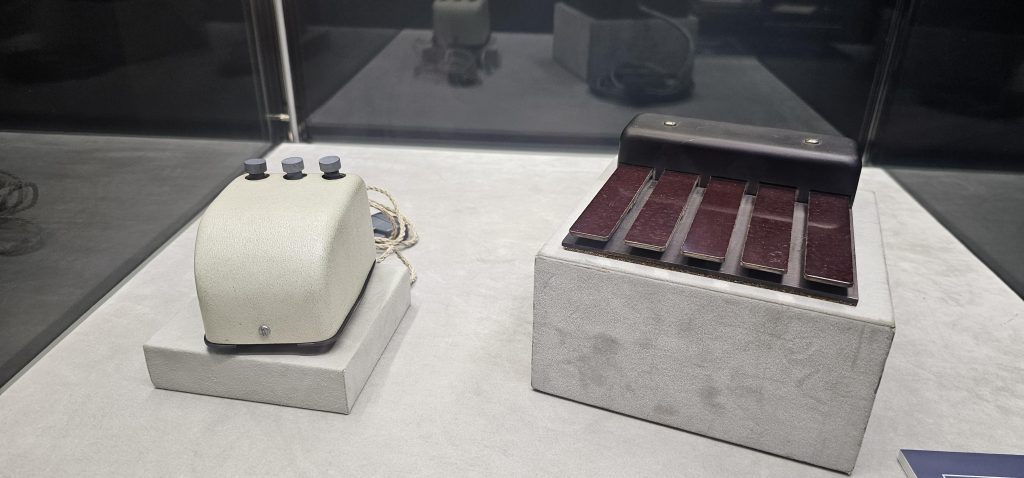
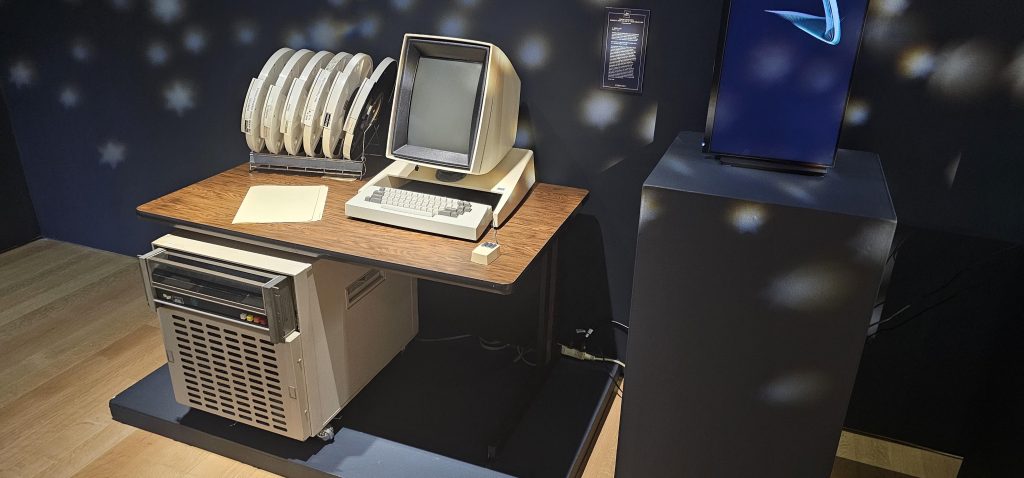
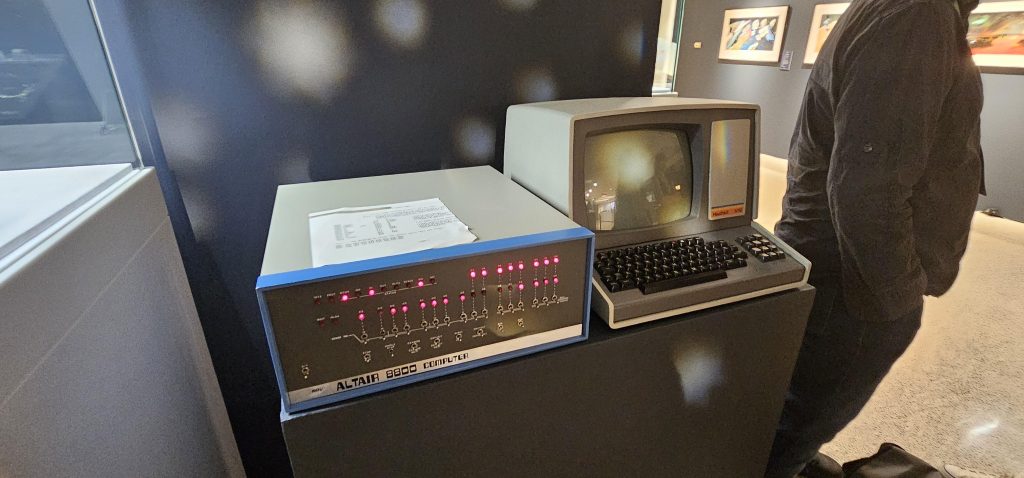
On display were all sorts of computer history of the “early major days” variety, ranging from a Xerox Star to an Englebart Mouse and even a Pac-Man machine. All had descriptions, all were held out where you could get very near them assuming the guard wasn’t watching too closely, and all of it with a starry-eyed disco-ball aesthetic indicating you were in a space lounge.
So yes, items from the museum were now going to be sold to the highest bidder in a few months. These were some of them, and likely there would be more.
And then, among the relics, I found Stephen Jones.
Stephen Jones and I go a long way back. He was interviewed by me for the BBS Documentary in 2003. So that’s 20 years I’ve known the guy. At our interview session, he showed me his PXL-2000 and his Delorean, both of which I can assure you are high-end geek possessions of the time. And I found his conversation style charming, and his passion for technical subjects perfect for my film.
Stephen’s primary non-profit endeavor, the SDF Public Access UNIX system, was in full swing back then, and is still around now. “Do cool computer things, but don’t try to turn everything into a financial instrument” is not the motto, but it should be. It represents, to me, a lovely ideal of a truly living computer community, incorporating new technology as it expresses itself being something neat, or worth bringing in. Laptop Amish, if you’re stretching around for an anology, which you shouldn’t be. It’s a computer club. And he’s a big part of it.
He was also my initial “in” for the dish on the now-not-so-Living Computer Museum. We’d gone a long way, and here we were, in Christie’s in New York City, standing among offered-for-auction pieces of a gone billionaire’s museum, and maybe we needed to talk in detail, so we did. And I grilled him.
Let’s go back to that initial 2011 announcement page on the Living Computers Museum website, before it was officially an open building.
In the light of its piecemeal disassembly, a lot of this writing hits different. Here’s what I’ve picked up, from Stephen and others, and which I assume for some readers will be new information.
First, this was always intended to be an actual, non-profit, independent/independent-subsidiary museum. It never became that. It is not that. At best, the Living Computer Museum was a billionaire’s (sorry, multi-billionaire’s) collection of computers and technology.
Think of it another way: Jay Leno has a very famous garage that has many wonderful cars and vehicles in it. It is currently, as of this writing, run by a very competent manager named Bernard Juchli, who has been keeping the collection in line for over 20 years. That is, to say, that Leno has a massive collection of cars, competent staff to take care of it, facilities to show them (he has had a number of documentaries and television shows about the garage) and he could probably even open it to the public for an admission price. But you would be hard pressed to call it a “museum” in any sense beyond “it is a display people see videos about”.
As per the request in that 2011 webpage grab, people donated many computers and pieces of history to go into the museum. They expected, no doubt, that they and their children and their childen’s children could stop by displays and point and talk about the family connection to these items.
That was a mirage, a misunderstanding.
This was Paul’s collection of computers, aided by friends and fans. It was always that. The Living Computer Museum, it turns out, cost millions, over ten million a year, to operate as it was set up, and it never came close to making that amount of income from door sales and t-shirts. It never came close to even figuring out how it would.
It’s perhaps not surprising this misunderstanding could happen, and with what felt like all the time in the world, a mere five years and change of being open to the public might have seemed like a mere revving up for the grand plan of what would come next. But nothing came next. It was a collection you could walk through in a really, really nice display case.
And now it’s time to sell the collection.
Before I end up on a huge rant about what it means to be a museum, let me at least give you some relative good news.
The current rough plan is that the big-ticket items, like this Apple I, will be sold at auction. They’ll make beaucoup bucks, go into private collections or maybe even other institutions, and that’s that for the headliners. But that leaves a lot of other stuff.
SDF has a rough plan to raise funds and digitize software, documentation and other related items that are not part of these big-ticket sales (which will be relatively few) so that unique bits of history that are not headline-grabbing trinkets will, potentially, have a chance at being shared with the public.
And I’ve stepped into it. I’ve offered to take software and documentation and store it at the Internet Archive, and of course to work with SDF on ways to digitize/rip/scan materials and, also, host them at the Internet Archive.
It’s all preliminary, but my card is in the hat. Things are not going to be discarded, if I have anything to do with it. A lot can change, and we’ve already seen expectation vs. outcome with this whole experience, but rest assured, I’ve at least tried to provide one last safety net for the kind of history that easily finds itself gone because nobody steps forward. Internet Archive has stepped forward. Stay tuned to see how that works out.
But you know, what did we learn here? What did we actually come away with in the realm of lessons or teachings about what issues this whole mishegaas has churned up?
I have found, perhaps not to my surprise, that a few people in my orbit are displeased I have punched the dead billionaire, ostensibly about all the good the dead billionaire did. But I wish to point out the dead billionaire did give away all that money and yet still had 20 billion dollars at the end, money that went off and did not do as many nice things as the money given away. So much contributed, tax-free, and yet there’s even more. Perhaps this is not the best place to point out that every billionaire is, in many ways, a failure of society, but maybe we can put a pin in it when we have our first trillionaire, assuming that criticizing a trillionaire is not made illegal at that soonish juncture.
I did have some people say, in not so many words, that of course the Living Computer Museum would collapse once its Master of the House was no longer in charge, and I would take this time to point out that Gordon Bell, co-founder of the Computer History Museum, passed on in May of 2024 and yet the Computer History Museum lives and breathes in his absence. It wasn’t a hard problem.
It’s easy to call me ungrateful, but my ungratefulness comes from the narrative people weave near the power of money, like those myths formed around gods and devils, to explain why things are how they are. I appreciate life and its little whorls and eddies that capture us by surprise and we sink or swim. I do not appreciate acting like someone spending a lot of money on something that slightly amuses them earns them the greatest respect. Especially when, as I do now, I walk among a literal army of people working to clean up the mess left behind, after their march to oblivion.
]]>It flows fast, so fast that when you look away and look back it’s in many ways an entirely different river, not just a slightly different one. It used to be blue with an occasional brown or black. Nowadays, it’s basically brown and black and a signficant amount of it lets off a slow-moving steam that you’re positive causes cancer in 99% of living things. You used to swim in this river, but now you generally don’t, and by “generally don’t” you mean “never”.
Instead your interactions are thus:
You have an occasional cinderblock you wouldn’t feel comfortable throwing in the tiny lagoon you mostly hang out in, or the notably smaller (and cleaner, and calmer) rivers you swim in these days.
So, you walk down to the bank of the river of lost dreams and sulfuric nightmares and throw that cinderblock as far as you can to see what sort of massive splash it causes, and what horrors lurking underneath its surface will temporarily breach to snap and bite and thrash until it goes back to a flowing, nauseating shit-river.
Anyway, that’s how I tweet.
I wrote up this massive framing entry to prepare to write a meaningful weblog entry about what we’re all calling AI but is just “throwing so many GPUs at the problem that our inherent need to find fellow souls in the darkness does the rest”. I call it “Algorithmic Intensity” and started the journey of writing a contextual entry to give my thoughts considering 40 plus years with computers, hype cycles and expectations of technology.
I ended up not doing it, primarily because a lot of the same effort that took writing weblog material and doing presentations is mostly taken up by The Podcast. The amount of paying subscribers has dwindled over the six (!) years it’s been recording, but those folks do help with my medical bills and other costs, so they’re kind of getting the best of me, and definitely the best of my efforts. I mean, don’t worry, I like you too, errant reader from beyond the screen – but those folks keep my office rented, my doctors’ visits stress-from-bills-free and allow me not play Old Yeller with my domains.
This balancing act, of doing free and by some definitions altruistic sharing of information with the nitty gritty costs of material goods and services and vendors is the absolute classic conundrum, and lies at the heart of many an Internet Presence. One of my credoes when I’m talking to people who want to do some sort of endeavor is that Every Person Is At Least Five People when it regards to ongoing concerns that produce work on a persistent basis. Someone blasting out an epic every half-decade or so aside, if you find a “person” doing “a lot”, the chances are that that person has other people, friends or collaborators or employees, who are doing some of the lifting. To consider those people lone wolves is usually a fallacy, and therefore there are somewhat-hidden costs or measures of contribution that are leading to the thing you just … get to have.
I’ll save some comments on AI for the end. Let’s get to why I’m writing this at all.
The cinderblock I threw into the Twitter crap-stream was a comment that Google had made yet another user interface/experience shift, and in my opinion, this took a number of skirmishes the company has been waging against the idea of the world wide web and moved, intentionally or not, into outright war.
The actual content of the thread is sort of irrelevant to me; but just to satisfy curiousity, I was essentially indicating this: Google forcing, by default, to a majority of users over time to see a generated summary of the output of the aggregate browsed sets of material out on the internet, especially at the low-quality they’re doing it, is a fundamental shift in the implied social contract that allowed search engines to gain the utility they have. I did it in a handful of crappy tweets and was literally in between some Gyoza and my Sushi lunch and when I noticed sometime later that I was getting tons of notifications (I don’t have twitter as a client on my phone anymore, so I didn’t get buzzing or beeps or anything) and when I ran the analytics that the account has, the numbers were fucking ridiculous:
“My child has been kidnapped; if you see a grey Toyota with red stripes, call the police” deserves those kinds of numbers. So does “I, person responsible for ten years for this beloved product or franchise, was just summarily fired for unknown reasons”.
“I think Google made a boo-boo” absolutely does not.
But justice doesn’t exist for this sort of lottery, and I watched the flaming pyre of attention gain millions of (partial) humans and tens of thousands of “Engagements”, and I have a general rule about all this.
All this to say that once we’re up to this level of froth, whatever’s coming out of it has the stretched-almost-transparent feel of an already flimsy nylon sock over a 55-gallon drum of toxic waste. Twitter used to be amusingly knockabout in the variance of Opinion Tourists who would stop by for a quick hit; now it’s just a series of either “didn’t read” or “I am stopping by because the only way I feel anymore is the resistance from sticking a blade against your rib cage”.
On my cold read of the actual responses with actual words, they are best summarized as:
- You say AI-generated summaries are a step too far from Google. I do not like previous Google steps.
- It’s actually all great and you are old. (Someone called me a Boomer, but heaven’s sakes, I’m Gen X)
- Everything is terrible and this is terrible and you are terrible
- Herp Derp Dorp Duh (Rough translation)
Let’s waste the time with what I was bringing up, in a slightly cogent fashion:
For sure, Google has both innovated some amazing accesses to realms of information (Maps) and often provided a (usually bought from someone else) product that many might find useful (Mail) and has done services which take advantage of their well-funded technology to provide a nominal benefit to the world (the 8.8.8.8 DNS server). They’ve also, in their quest to make the web “better”, leveraged their near-monopoly on browser engines and search engines to create “programs” and “policies” that are little more than “make it better for Google” (AMP comes to mind, there’s many more).
Google’s constantly manipulation of web standards to suit their needs does not make them special; they’re just the assholes with a hand on the steering wheel for now. And like previous holders of this title, they’ve poisoned, cajoled, forced, ignored and ripped their way through standards, potential competitors and independent voices and figures along the way.
Picking out any specific sin (or “hustle”, as shallow techbros like to call it) is usually a Sisyphean task, but in the actual thing I was referring to in my tweet cinderblock, it was a program that Google implemented where an AI “summary” is showing up in a growing set of mobile and desktop instances (customers), completely choking off anything one might point to. I called this a declared war against the web. It is not the only war. It is not only warfare against the web. Picking it apart reveals chains linking to a thousand points of contention. I’d hoped to avoid AI discussion for some time but here we go.
I have lived through a variety of “revolutions” and hype cycles of said revolutions, and the fallout and resultant traces of same. I did a documentary about one. I enjoyed living through the others, although with time it’s been a case that I was often not old enough or given enough perspective to truly look down the sights of what was going on and derive a proper horror/entertainment from the various ups and downs.
And now, one version of a type of software that has been around for a long time is suddenly on everyone’s minds. It’s being used to make a variety of toys. A number of people are hooking those toys up to heart machines and bombs. And I’m fifty years old and I get to watch it all with a pleasant cola in my hand.
I’m profoundly cynical but I’m not generally apocalyptic. For me, what’s being called “Artificial Intelligence” and all the more reasonable non-anthropomorphizing terms is just a new nutty set of batch scripts, except this time folks are actually praying to them. That’s high comedy.
Also, my eyelids are growing heavy and I literally have to caffienate myself to keep talking about it. Fundamentally, there’s as much excitement for me in the “potential” of everything AI as there was for double-sided floppies, sub-$500 flatscreen televisions, console emulators, USB sticks, MiniDV cameras, and discount airflight. All of them enact change. All of them are logical innovation. All of them stayed, morphed, went. At no point in any of them did I have apoplexy or spiraling mental breakdowns. Life went on.
Regarding of “something should be done”, the point of my original planned weblog entry was to refer to the Aboveground as something some AI companies were doing – straddling that balance of “we are too new to be regulated or guided” and “it’s too late, we’re basically ungovernable”. My attitude is that Algorithmic Intensity should be punched in the crib, given a solid going over. I had a conversation with one AI person that “farm to table” tracing of the source material being trained on would be a must and that companies should be devising ways to provide that information. He said it was impossible. It is not impossible.
When I mess with this stuff (and I have accounts on a bunch of these services, that I mess around with), I have a fantastic time. I am doing all sorts of experiments and try-outs of the tech to see if it has uses for what I deal in, which is scads of information. My response continues to be, as it always has for something new, that setting the old stuff on fire to “force innovation” is a sign you are a world-class huckleberry. The main change in this particular round is I can’t remember a time we had so many people showing their whole and entire ass by saying “I can’t wait to fire ______ because this MAKESHITUP.BAT file is producing reasonably full sentences”. What a lovely tell. In my middle age, being able to have something go “beep” when a time-wasting numbnut has entered the chat is a golden algorithm, and the speed at which companies and individuals have been willing to throw everything out, reputation-wise, is a glorious moment.
Which brings me, again, to this specific Google situation.
There’s just no way the high-fructose syrup of the kind of answers these “smart agent” responses are giving in search engines will last. A number of people on Twitter told me that if a site could be summarized in 200 characters by this, they never deserved to exist anyway. Problem is, the 200 characters are NOT summarizing the site. It’s not even often good! It might get “better” but ultimately companies like this do not have the ability or skill to generate new creations or do helpful works – they can only remix and re-offer, buying out the same collections or licensing access. And if those terms are not good, they’re going to lose a lot of money buying back trust.
I don’t like writing about non-timeless things, but we are in a phase right now and that phase is both fleeting and extraordinarily entertaining to me. As I said to a friend recently,
“We get to be 50 and watching this all go down! Front row seats!”
How this all shakes out, what parts stick around and what snaps in half, is for luck and spite and challenge and response to decide. If the best people always won, our world would look and feel a lot different. But while the fireworks and trumpet blasts echo through the landscape, I’ll save a seat for you.
]]>I block. I block frequently, quickly, and across every single medium that consitutes “communication” in the contemporary era.
I’ve been doing it for well over a decade, but somewhere after my heart attack I upped the frequency and dropped the level at which the “block” action gets enacted. It is very, very easy to find yourself unable to directly communicate with me via the method I blocked you.
Why anyone would possibly care that I do this (beyond the people I block) is not entirely my responsibility, but I think there’s a point, so let’s keep going.
First, I’m rather easy to find and communicate with. I have many channels of ingress, from phone numbers and e-mails to social media and streaming. I do this mostly because I’m trying to be there when people have materials to donate to Internet Archive, or if they’re in distress and need to reach out to someone. Both these situations happen more than one might think. I appreciate both when they do, and do my best under the circumstances.
But the downside is that people can reach me very easily and all your instincts that there are spectacular counts of truly damaged individuals who have effortlessly acquired internet access and spray their damage around the world like some urine-filled lawn sprinker are, as I can personally attest, correct.
At some point, depending on how far back you have persisted online, there was this unspoken contract that you gave someone multiple bites of the apple to show how awful they were, under the theory that the first interaction was an inadvertently bad impression. That contract is no longer in effect. That’s a large contingency of folks gone; the masters of showing up in the middle of a conversation or communication, unbidden and unwanted, and dropping absolute bile into the stream. One strike and they’re out.
Occasionally, I even pre-block. I block people who, when I see them interacting with others, I have no overly powerful urge to envision ever being a part of their online lives. I suppose there’s some fundamental Fear of Missing Out that could be ginned up regarding them, that they might end up saying or doing something that I should know about, but I’ll let others tell me. There are a non-zero amount of times I’ve seen people say “Foobatz69 has a point” and I go look them up and I’ve blocked Foobatz69. Maybe I’ll peek in. I probably won’t.
Less obviously, it goes the other way too. In a notable amount of situations, I’ve blocked people because I recognize that I’m going to be the problem, that what I do and how I approach things are exactly the sort of activity that makes a given person or account go ballistic or switch to attack mode, so I save us both the trouble. I occasionally hear they’re confused. I do not seek to explain why. They continue to live a normal and happy life, and I continue along with mine.
So, why bring this all up?
Well, first, occasional this-and-that publicity has provided me with the ability to see discussions about myself in which a small number of blocked folks commiserated about the whole “Jason blocked me” situation and of course many have taken the Imagination Express to Injustice Town to describe a situation where I could possibly have come to the decision to block, and the general consensus will be some variation of a degredation of my mental health.
It’s quite the opposite. My mental health has never been better.
Outside of absolute buzzbomb cornhusks dropping corossive misery at every opportunity, there were a range of folks who I truly admired and respected who, upon my looking back retrospectively at our interactions across years, totally lacked warmth and friendliness from their position. Literally every response a vicious insult and somehow, I’d considered this a pleasant and comfortable dish to be served down the front of my tuxedo on common occasions. Their blockage is literally medication, a salve, an ointment. I’m free of my delusion that they are friends.
And again, there are folks who, I find, are going to be nothing but negative energy in my life, at a time when I am growing older and don’t see much need to throw my body and life into a deep dark well of irrelevant free-floating rage, never to be recovered or rewarded.
And you know? On at least a half-dozen occasions, which is more than any reasonable person should experience, I’ve had individuals who, upon being blocked and clearly indicated their presence and communication were unwelcome, proceed to track down and find every single communication channel still open to them and begin upping the energetic demands I explain myself. I’m talking chat systems, phone calls, e-mails from various addresses, and asking friends of mine who might still have contact with me to “put in a word” to “set the record straight”. In other words, I have entirely too many examples where people I had a bad feeling about have gone absolute full stalker mode, in a way that they would never imagine themselves as such, but absolutely are. On two of those six occasions, it happened physically.
None of those half-dozen are being unblocked. That was not the solution to the percieved issue.
I’m sharing this not for some sort of support plea, or to indicate I have a hard life. I have the mathematical opposite of a hard life.
I’m sharing it on the off-chance that someone reads this, realizes their relationship with someone or someones online is actually a massive negative energy drain, or rife with abuse, or simply a case of not realizing you’ve left a pathway to lightweight harassment that can do nothing but increase. If that’s the case, trust me. Block, block, block. Report and block. Mute and block. You will feel parts of your soul unclench that you didn’t previously understand were balled into tights fist of stress and simmering disaster. I’m involved in dozens, sometimes hundreds of interactions in a given week, and I do it. You should consider this your license to do it as well.
If this helps two people, it was worth it to discuss. And it’s already helped one, and that one is me.
]]>Naturally, as is the case when you post anything anywhere in public, I am called a liar. I’ll simply say that everything I describe in the blog entry happened. I contacted a VCF administrator and was told it was all disposed of, and that they kept the bins. I am fine with people claiming that disposal was not what happened, but this is what I was told, directly, in human words. The fact that I am seeing contradictory and confusing descriptions of what happened is not a checkmark destined for the Win column.
A few people have rushed to indicate that I need to be more careful describing “which” VCF entity is at fault. I am sad to report to them all that the Byzantine VCF structure of name licensing, geographic branding, and internal corporate entity is meaningless to anyone six inches away. You all know each other and you all interchangeably use nomenclature. If you are part of an organization that calls itself some form of “VCF” and need an opportunity to write a statement about how your organization in a solitary/separate entity and should be considered more worthy or ethical than others, feel absolutely free.
A small sliver of people were concerned I was saying that I was never going to go to any computer history conference or event again. I am a free person with the freedom to attend whatever is open to the public. As it stood, however, VCF East was the easiest event for me to attend, so it was where I saw people the most. A minor point is that I considered attendance a form of endorsement, but that is my own personal choice. The chances of me attending other events is, like death by cow, low but never zero.
The rest of the discussions I have seen from the blog entry, raging in the usual stages of social media and posting forums, have failed to require any further response or thought from me personally.
Finally, this is all relatively minor in terms of the work I do and projects I focus on, an event that brought me some fury but which has mostly played the part of filed under “life lessons”. I just got tired of having quiet inward emotion when I was reminded of the event, specifically when VCF announcements would pass by my screen, followed by nice folks asking if they would be seeing me at the event. Now I have made a statement, and rather than the beginning of a saga, I consider it the end of one. My conversations with people and organizations I shift materials to are much longer, much more involved, and with much more contingencies as a result of this event, and things are better for it.
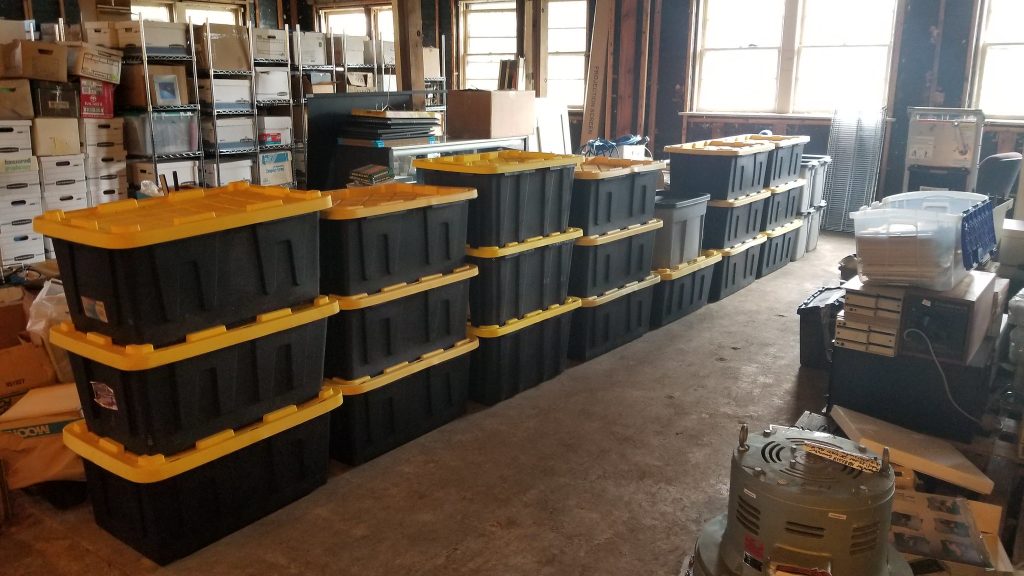
Years ago, clearing out the Information Cube, I donated its contents to roughly 10 organizations, carefully splitting things up for the best home, as I’d been entrusted with these materials by many great folks who believed I’d make the right choices. Videogames went to the Museum of Art and Digital Entertainment, books and many printed materials to the Internet Archive, piles of game-related magazines went to the Strong Museum of Play, multiple sets of Wired magazine went to a scanning group, and so on. This was a shipping container worth of material, so we are talking dozens and dozens of crates, received by trustworthy and great folks across the entire country.
Among these donations were a set of publications, mostly IEEE-related but with a few other sets of titles, to the Vintage Computer Federation, based in New Jersey. The donation was roughly this:
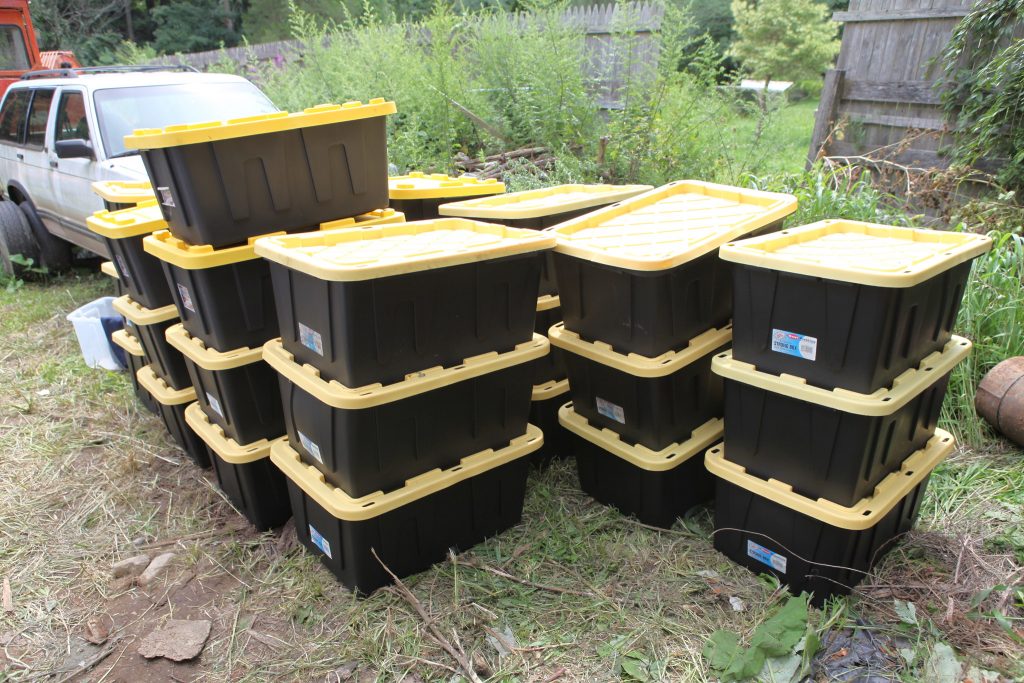
To make this donation, I paid for the containers, filled them, put many issues in bags, and then rented a truck to drive them the roughly 70 miles to the VCF headquarters in Wall, NJ. There I dropped them off and went home. This was roughly 2017.
A number of years later, I contacted the Vintage Computer Federation to ask how the magazines were doing, if they were part of a project, or if I needed to transfer them elsewhere.
I was told they tossed them out. Every one.
However, I was told, they had decided to keep the plastic boxes, and were making use of them.
As a result, I’ll state clearly: I have no intention of attending the Vintage Computer Festival or doing any sort of interaction with the VCF team again.
I’m mentioning this because I went to so many of the festivals, I know people would be expecting me to go, and I get mail every year looking forward to my attendance. I have indicated I would not be there, but not totally explained why. Now I have. I consider attendance to be an endorsement of this action, and I am fundamentally uninterested in whatever clumped-together set of words they might consider an apology. The concern is dead to me.
I also want to take this moment to clearly state that Evan Koblentz, the director of the Vintage Computer Federation for many years, who took the original donation, had absolutely no say or part in this pulping of historical magazines, having been driven out of the organization years before. Evan has always been a steel beam of dependable honesty and directness in all the years I’ve known him, which is bordering on decades at this point.
There’s not much else to say. Go if you want, but I won’t be there. Hopefully I will see some of the nice folks I know from the event in other contexts. Otherwise, it has been quite real, and they’re memories I won’t trash for their containers.
I’ve written so much about what is now called the Manuals Plus Collection. Let’s go find those:
- In Realtime: Saving 25,000 Manuals
- In Realtime: Prepping for the Transfer of 25,000 Manuals
- In Realtime: It Is Almost Halfway Done
- In Realtime: Day 2 Felt Like Week 4
- In Realtime: It Is Done
- A Small Dark Detour
- In Realtime: Post-Mortem
- A Little Bit of the Manuals
If you don’t want to walk those, I’ll make it simple: I got word in 2015 of a collection of manuals inside a business that was getting out of the business, and while a lot of well-meaning people talked a good game, they wanted to cherry-pick (people getting rid of stuff hate cherry-pickers), and I drove down to show I was serious, and after a week of work with MANY volunteers and contributors, we ended up with pallets of documentation inside boxes, numbering something like 50,000-60,000 manuals. (A rough estimate.)
Then they were stored in a storage unit. Then they were stored in a closed coffee house. Then they were transported to California. Then they were stored until last year, 2023.
Last year, a group called DLARC, doing digitizing and indexing projects around ham radio and radio technology, worked with me and the archive to sort out a few pallets of the manuals for products related to the history of radio/network technology, and off they went overseas to be scanned. And as of this month, the evaluated, professionally-scanned and available-to-the-world manuals are beginning to show up in this collection:
The Manuals Plus Collection
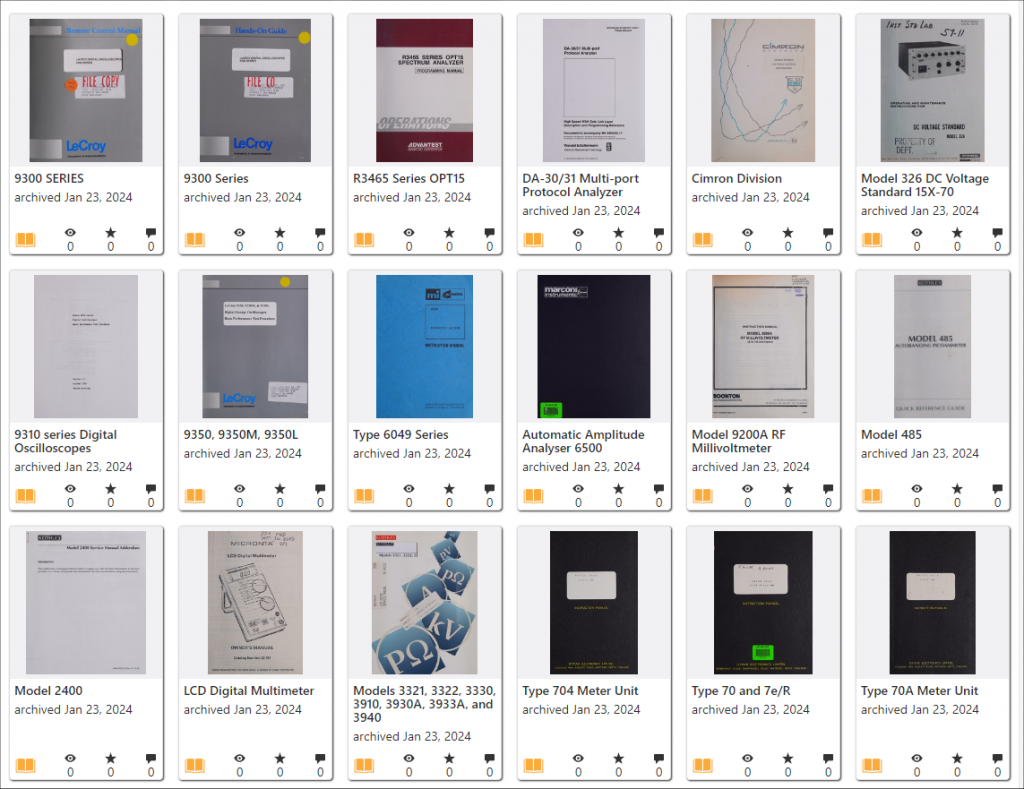
Like, it’s happening! It’s happening. It’s happening!
Like anything else open at Internet Archive, you can search the text contents (which are being automatically OCR-ed). You can download the original unformatted jp2 files in a zip. You can download a PDF generated from the jp2 files. You can read it online.
Either this is the first time you’ve heard of all this going on, or you’ve known about it and wondered whatever happened to that mass of manuals.
They’ve been kept in safekeeping, awaiting their moment. We reboxed them, and in fact, transporting them from MD to CA was the last major project I did before my heart attack. It might have been the last thing I ever did for the Archive! That would have been a pretty good way to go out.
But here, in 2024, the final stretch is going on.
And now, the pitch.
The group doing the digitizing does lots of digitizing for the Internet Archive. They are well-paid and legitimate professional contractors who are sent the items, and who do careful scanning to the best of the materials’ ability to provide access to the information, and then do quality checks, and then upload them. When they’re humming, they’re processing a pallet every couple of weeks (with lots of mitigating factors). They’re going to get through the four pallets sent to them from the DLARC sorting very quickly, in other words.
I’ve negotiated a situation where, if money is sent in, the remaining pallets that should be scanned can just be sent along without sorting them for DLARC funds, DLARC will fund any that happen to overlap with their mission, and the rest will just be done.
That’s if money is sent in.
How much money? We’re still working that number out. It’s going to be somewhere in the range of tens of thousands of dollars. So I’m looking for both big-ticket supporters (who can mail me at jason@textfiles.com) or individuals. In all cases, you’re just going to donate to the Internet Archive itself, which is at https://archive.org/donate and your donations are tax-deductible. Telling them you’re donating to support this project will help keep the project funded. (There’s a way to leave a comment, and if not, send me a note you did it and how much).
We’ve already sorted these things into pallets, and we know a subset of these (HP and Tektronix) are scanned elsewhere and don’t need to be specifically done this way. This leaves just the historically vital and informationally wonderful manuals dating from the 1940s through the 2000s. As they’re popping up, each one is a gift.
If we make less than we need to scan them all, then we’ll only scan up to where it’s paid for. I believe we can close it out, but if the interest/money isn’t there, then it isn’t there – fair enough. Browse the collection as it grows into thousands of manuals as it is and consider if you want to be part of all that. That’s definitely happening.
But what a happy ending it would be to push all these manuals through the process, and close it up. That’s why I’m popping up to talk about it, and why I hope you would consider contributing towards it, for a non-profit that deserves your support generally.
Meanwhile: It’s happening! It’s happening. It’s happening!!
]]>Computer Shopper was a hell of a magazine. I wrote a whole essay about it, which can be summarized as “this magazine got to be very large, very extensive, and probably served as the unofficial ‘bible’ of the state of hardware and software to the general public throughout the 1980s and 1990s.” While it was just a pleasant little computer tabloid when it started in 1979, it quickly grew to a page count that most reasonable people would define as “intimidating”.

In a world that saw hundreds of magazines and thousands of newsletters come and go about technology and computer-related subjects, Computer Shopper was its own thing entirely. Not only thick as a brick, but clearly opened to anyone who waved cash and covering vendors who were selling computer components down to the individual part level. You might have a good set of ads in PC Magazine but to browse over price lists of capacitors, power supplies and wiring, the massive monthly Computer Shopper issue was going to be your go-to.
There were two other aspects to Computer Shopper that has given it a halo of intrigue and positive memory: First, the paper was incredibly cheap, newspaper tabloid level by some eyes. This seeming disposability infers a weird sort of honesty about the advertising contents – it is what it is, it represents what the actual pricing is, and what’s actually available. The lack of pure slickness in the printing process was a baggage of “look, I’m lucky if we survive another month and this is the straight up price we’re offering” across the many hundreds of ads in a given issue.

But second, was the full-bore willingness to seemingly absorb anything computer adjacent into its pages. Pre-fab computers and commercially available software was listed inside, sure. But if you were selling tech clothing, clips, floppies, tapes, plugs, paper, switches and accessories… you had a home there as well. It gave a truly manic and freewheeling melee to the affair, and for those of us who wanted to know more than the standard 20-30 software packages everyone was buying, or to think about smacking together a bunch of parts to get a mutant-powerful system up and running, this was the place.
To a smaller set of us, the BBS Listings in the back were also a very notable aspect. BBS operators across all the spectrum of cliques and locations thought of Computer Shopper as the BBS yellow pages, the phone book of the online, for almost its entire run. You flipped to the back, found your area code or state, and downright eye-watering levels of BBS listings were waiting for you. Inaccurate? Sometimes. But a truly unique assemblage of what was.

That catches us all up to what Computer Shopper was. Like many print-based computer magazines, Computer Shopper grew in size into the many of hundreds of pages, some greater than 800. It thrived in the world before the World Wide Web took hold, and once you could do daily updates of parts and prices at various websites, the months-lag in printing schedule and the lack of responsiveness compared to websites made it lose curry, favor, and eventually pages. It died a quiet death in 2009, becoming a barely interesting site and then an uninteresting zombie.
Still, it was a heck of a run.
People often ask me the same basic questions regarding old computer history and access to it. One of them is to discuss potential holy grails, possibilities of where some effort might be afforded to acquire potentially lost information or artifacts before they’re gone.
A common go-to for me was Computer Shopper, because it’s a perfect storm of absolute fascination and completely intolerable amounts of barriers towards digitizing it into something readable online.
- It’s fantastically huge. If you scan in an issue, however you do it, you’re talking hundreds of pages for that month, all of them requiring babysitting to ensure they got through.
- The cheap, cheap paper is a nightmare to run through a scanner – either a flatbed-based misery or a sheet-fed scanner that’s one molecule of damage away from crunching pages up.
- The gutters (space between the spine and the information on the page) is offensively small – millimeters where there should be a half-inch. Especially towards the 1990s era, the instructions to advertisers about layout clearly didn’t make many bones about informing folks about margins. This means the books have to be split apart, a despicable sin that strikes against the heart of the pure.
- These myriad, no-gutter, cheaply-printed pages are both tabloid size and never considered text too small to allow. This means that not only is the page size not going to fit in 95% of the consumer scanners out there, but they’re going to need to be scanned at the highest level you can, to not miss anything. The page size, digitized, is going to be offensively huge.
So, the prospect this would ever happen was basically zero. You needed someone who had the time, inclination, and support to do what was going to be one of the more painful scanning projects extant.
It turned out to be me.

So, there I was whining online about how it was 2023 and nobody seemed to be scanning in Computer Shopper and we were going to be running into greater and greater difficulty to acquire and process them meaningfully, and I finally, stupidly said that if we happened on a somewhat-complete collection, I’d figure out how to do it.
And then an ebay auction came up that seemed to fit the bill.

Out in Ohio, someone decided to sell nearly 200 issues of Computer Shopper for a few thousand bucks.
It’s important to understand the usual per-issue prices for Computer Shopper, and that usual per-issue price can get as high as $50 an issue. Obviously, at some large scale, this becomes an untenably large price. But in this case, they were being sold for about $13 an issue, which is not zero, but somewhere in the realm of manageable: About $3,000 for the lot.
Now, I’m not going to have $3,000 to throw around like that. So I put the challenge out there: If people get together and give me $3,000, I’ll buy this lot and scan it it.
It hit goal in about 3 hours.

As you might have figured out, delivery/mail was not an option. To make that happen, I reached out for a volunteer, and a few people came forward, including Wes Kennedy, who made this his main project for a few days. He’d left one job and was starting another a week later, and “picking up all the issues, packaging them carefully, and putting them in the mail to Jason” became his fun-cation. He deserves all the kudos for this.
When 14 large boxes arrived, they included all the issues, put inside large paper envelopes and wrapped in blue plastic that definitely didn’t look like cocaine to the storage unit guys I cruised past.
So all of the issues were now safely within my control.
One might be inclined to say “Well, that’s only half the problem.” and you’d be off, because it’s actually less than a quarter of the problem. Acquisition, after all, was just money – buying issues in bulk and ending up with a good amount of them was just a case of assembling some cash.
No, it was definitely the scanning that was going to be the big …. issue.

If not obvious, the pages of this tabloid-sized periodical are not just big, they’re over the bounds of pretty much every scanner out there, at least in the consumer space. (There’s plenty of large-format scanners past the $5,000 range, and they’re also gargantuan affairs, meant to handle blueprints and posters.)
But I did find one commercial scanner that could do the work: A Fujitsu fi-7480 wide-size sheet-feed scanner, which tops out at about $3,500. I’ll simply say a kind anonymous donor bought it outright so I wouldn’t have to crowdfund for it, and for that I’m eternally grateful.
Here’s what dealing with that process looks like, with the scanner software (Vuescan) set carefully to neutral and pulling in the massive pages through the fi-7480:

…which brings up the situation involving the pages.
Now, about 12 years ago, I really raked someone over the coals for destroying copies of BYTE magazine to scan them. He was not happy about this at all, and there’s a chance he may have stopped his project just not wanting to deal with such criticism. I hope not, but I do stand by the fact that he indicated he was immediately disposing of the pages after scanning them, which meant any mistakes or oversights were permanent. (At one point, he mentioned having to fish a page out of the trash when he discovered he’d skipped it.)
At that point, I made a declaration of my standards for debinding/pulling apart a magazine to scan it:
“IF I have a document or paper set that requires some level of destruction to scan properly AND IF I have three copies of it AND IF there is no currently-available digital version of the document AND IF there is a call or clamor for this document set THEN AND ONLY THEN I will split the binding and scan at a very high resolution and additionally apply OCR and other modern-day miracles to the resulting document so that the resulting item is, if not greater than the original, more useful to the world.”
…I should have added an OR.
“…OR if there’s very little chance of anyone ever being able to assemble issues to scan in the foreseeable future.”
Because that’s rapidly what was happening with the Computer Shoppers.
$13 an issue is perhaps quite a bit, but people want even more for individual issues and it will be a bit of a stretch to actually acquire them all. So, even though I don’t own 3 copies personally, I also know the other two potential copies are passing among collectors at this point, so they’re being held, in some way, in trust. It’s my hope that I’ll eventually have a chance to do this work for all the issues, but until then, I work with what I got.


Debinding, the taking apart of a bound issue of a magazine to turn it into a stack of papers to scan in, turns out to be a process. A painful, time consuming, involved process. One which I knew would be involved but not as involved as it has definitely turned out to be.
Luckily, people have come before me. There is a rather beautiful documentation out there, about the best practices in debinding magazines, from Retromags. They walk through the pros and cons, the potential issues, the considerations while doing it, and the most common pitfalls that will befell your project if you don’t stay on top of them. I read this like the Book of Life before setting off on dealing with Computer Shoppers, because their “how to ski” primer was going to be critical as I skied backwards down a double-black-diamond slope of these bible-sized monsters.
In this case, I have to use a heat gun, aiming them at the glued issues of Computer Shopper, warming them up until the glue starts to become slightly liquid and then carefully pulling the pages apart from each other, placing them on a large table I’m working on. If the glue comes too close to the pages after I pull them apart, it actually sticks them back again. It’s a huge mess, and with hundreds of pages in a typical issue, hours of work.
There are banger groups out there working tirelessly to debind magazines, scan them in carefully, fix any issues with the looks, and upload them to various locations. One of them is Gaming Alexandria and it’s been a pleasure to fall in with them and discuss the nitty-gritty of this process. They’re scanning in obscure periodicals at scale and they know what they’re up to.
In fact, we’ve made a deal, where I’m just focusing on the “Raw Scans”, and these raws will go to them for post-processing, creating a more readable or functional set of final readable versions of Computer Shopper for people to appreciate. The Raws will always be available, of course – 600dpi TIFF files scanned neutrally of the original pages, placed together in mothra-sized .ZIP files that number up into the many gigabytes, for people to pull down when needed.
A scanned page of a typical issue looks like this (with a little size reduction for this essay):
You can see immediately the difficulties and intricacies of this project.
Like I indicated, there was very little care for margins, and none for minimum size of text. Computer Shopper advertisers did whatever they wanted, however they wanted, and into newsprint, which further made things whacky because bleed is a major issue, pulling the other side’s ink into the current one. And all of this on a massive piece of paper – so in total, the original TIFF file of this image is a full-on 20 megabytes – and this issue has over 400 pages.
And before I forget to mention… I did a test scan with an issue that I had two copies of, to work out any major bugs and problems. And one major problem was that there was a roller at the top of the feed scanner meant to separate a stack of pages into single ones and feed them in properly. Well, that roller grips the page so tightly, it started to pick up ink and put it on later pages, leaving streaks on the page. A quick browse through the service manual, and I had to remove that roller entirely. This means that I have to feed the pages in, one by one, since otherwise it’ll stick them together and jam.
Through all of this, we’re talking hours of work to do a single issue, and I have to do it a couple hundred times at least. This is going to be quite an epic task… which is, again, why we’re down to me doing it because the combination of cost, time and effort leaves almost nobody else who’d be in a position to be able to do, much less want to.

We did one issue, February 1986, “all the way through”. I debinded it, cropped it, scanned it, handed it to Gaming Alexandria to process, got it processed, and then put it on Internet Archive, resulting in three sets of images: The Raw Scans, a “Readable” version and an “Aesthetic” version.
The “Readable” version has been heavily processed and contrasted. It makes it very easy to read a page because it has a really nice dependable color setup for it:

Contrasted with the “Aesthetic” version, that looks more like you would expect the newsprint and bleed-through original to look:

I personally prefer the “Aesthetic” – it brings me back to the way things were when I would buy Computer Shoppers at the local Microcenter and scour them for information and inspiration. But a researcher, and more importantly an Optical Character Recognizer prepping things for searches by researchers, will much prefer working with the Readable version.
Now, Here Comes The Pitch.

So, I live here now.
For the next however-long-it-takes, I’ll be debinding issues, doing careful scans of them, then putting the resulting piles of pages into baggies and sending them into cold storage for permanent holding, awaiting the next time they might have use, or to redo a problematic scan. That’s happening. I’m just going to be on this all year, when I can.
But this effort of mine is rather meaningless unless there are real humans and smart scripts going over what’s being produced.
By a back of the napkin calculation, there will be at least 100,000 and more likely 150,000+ pages of Computer Shopper issues scanned during this project. There’s going to be a lot of them, and they’re going to be jammed full of information, imagery, embarrassment and glory.
I really hope that a group of people, together or separately, start using this bounty to rip out BBS listings, find trends in pricing and nomenclature, in tracking down humble beginnings and finding other amazing tidbits throughout computing history.
It’s nice to drop 400-800 pages at once into an item, but unless I get some of those nerds out there scouring the pages for interesting things, it’s just me scanning into a void.
If you know people will be interested, help them become aware. And if you see something interesting, bring it out and make it part of sharing, wherever you want to.
This will be an incredible amount of work. Folks threw thousands of dollars into acquisitions of hardware and paper and I’m going to blast a lot of my personal time into scanning these.
Make it worth it.

Addendum:
This entry got a lot of attention. Two questions arose, and I’ll answer them both here:
Are There Missing Issues?
Yes, there are. Here’s the list. If people want to donate or buy good quality copies for me, mail me at jason@textfiles.com. Here’s the missing issues as far as I can tell:
- Everything before November 1983
- 1984: January, October, November
- 1985: October
- 1988: June, November
- 1989: April
- 1994: April, May, August, November
- 1995: February, March
- 1996: April, May, June
- 1997: July, September
- 1998: January, May
- 1999: April, July, August
If people send them to me, I’ll take them off this list. So if this list is here, I’m still missing them.
Can I Help Support You?
Just enjoy the Podcast. I spend a lot of time on it.
]]>What I’m talking about is something else entirely.
It’s a situation where people want all the cachet of being outside the boundaries, in lawless territories where you survive on the wit and bravery (or brutality) of Taking The Initiative and damn the costs and risks, but also want to be protected and safe with all the constructs we in Civilization provide so you don’t wake up with your throat slit and your pockets turned out.
They want a fictional in-between place that doesn’t bend to the “inconvenient” rules and yet lets you summon them in a moment’s (or hour’s) notice when the game doesn’t go your way and you need to get the DM to re-roll for a Natural 20.
I have my own term for this phenomenon: The Aboveground, a mystical (and profitable) land where people want to believe they’re under the radar, being all subtle and hidden, when they’re actually functioning in plain sight.
(This is very different, I should note, from people who are functioning in an underground manner in plain sight with knowing intention of being watched and findable, just doing so in a double-switchback situation that means they function in that environment. Most people don’t actually want to take on the burden of this, but some do.)
I’ll give a hypothetical that I’ve used before trying to explain my thinking.
The Underground wants to do sketchy shit, so by word of mouth, everyone knows to meet over at Ken’s house, and Ken has a separate basement door entrance, so you know to park down the street and go to Ken’s house and let yourself in the gate and knock on Ken’s basement door and Ken lets you in because other people said you were cool. Once you’re all in there, drinking beers, everyone gathers up the stuff you’re going to do sketchy shit with and you head out into the woods and do sketchy shit.
The Aboveground wants to do all the woods stuff, except you meet at Starbucks and post it on multiple forums and tweet about it using some stupid codeword and also you want a sign at Starbucks telling people the Sketchy Shit Club meets around 6pm every Friday.
The simple fact is, we’ve been spending so many Herculean efforts to bring every single aspect of life online and make communication by massive observed networks and corporate-owned byways and highways that many people don’t even see these worlds as anything other than “the world”. From that lack of perception comes the continued desire to stay out of the eye of the public, or at least out of the eye of authority, to do neat or weird stuff that others might not approve of.
And yet, the fact is (or should be) that doing risky things entails risks. Playfully pop out of the window of your pal’s car to get on the roof to goof around, and you might injure yourself and die. Modify electronics or equipment to do something neat, and you might cross a wire and bust it up permanently, or (again) injure yourself. Take stupid chances, win stupid prizes, right?
But the growing denizens of the Aboveground don’t entirely like that. They’ve either internalized or integrated into their worldview that somewhere, out beyond the bounds of sight, they will always have a safety net, a ramp or an apparatus, that will ultimately provide comfort and rescue to pull them back from the abyss.
And to be clear: It’s an awesome deal if you can get it.
I, myself, have absolutely benefitted from taking wild swings at the fences and going out into the darkness with a flashlight and a prayer, emerging messy, sweaty, with a few cuts and a recurring nightmare about what almost happened there that one time. In my mind, the idea that ultimately, whoever or whatever found us would first try and get the injuries handled at a hospital, or would probably toss us at the edge of the border with an admonishment to not come back, was always humming along in the background, warm and safe. I’ve certainly walked in the Aboveground and fooled myself with the illusion that I wasn’t.
But that’s the point: The Aboveground is the Aboveground but it’s also the Illusion of the Underground cooked into it.
Perhaps that’s where I started to sour on it all, and recognize it for what it was: Cosplay for Hardship; a Kabuki Theater of acting out the long-worn tropes of the outlaw you once were, wearing the new business suit of what you actually are.
The Aboveground is a template that fits in hundreds of situations.
The reason I bring up this thought experiment and sidebar is related to the two most frequent times I see it in use, personally.
First, it’s what I started to see over the years as I would attend a lot of “hacking” conventions, where it was clear that the realms of curiosity and risk were being traded for 401(k)s, contract-driven shrunk horizons, and the safety and dependability for family. No shame in that. But yet, as that morphing and breaking out of the rebellious chrysalis happened, there was an insistence, or, more a demand that the strange, confused, brilliant and deranged hacking mentality be worn as a faded t-shirt or jacket throughout the process.
Hacking conferences are, in the present sense, overly Aboveground – they have to be. There are contracts signed, real names writing real checks with conference centers and multinationals that price out damage and vandalism, along with an at-call internal and external security force primarily focused on Stopping Crimes…. and yet people either still do the crimes, or they pretend that in some way, some squint-and-you-can-see-it version of being an outsider still persists with your name on the room and a credit card for the flight that brought you here. It’s endemic, marbled into the aging steak of these events, and it’s why, with very very little exception, I only attend ones I both like and which I can drive home from the same day.
And then there’s the other situation.
The entire technical industry and infrastructure space, especially the really “disruptive” ones, has progressively built itself not only on the idea that you should ignore the rules until someone actively stops you or you can get bought out, it nearly depends on it.
Fat with venture capital, bloated with many levels of management and oversight, and exhibiting absolutely no understanding of what represents long-long-term integration into the operations of humanity, good and bad, they instead chose the Aboveground lifestyle.
Don’t get me wrong – it’s hard for someone with a family or maybe even harder when they don’t have one, to turn down gargantuan once-the-province-of-kings level of wealth in doing whatever it is this company does and leaving the hard part, the question of what the ramifications are, to others. In fact, the whole idea of the Aboveground company is to let others deal with the ramifications. Find a weakness, a difficult thing to pull off in the realm of humanity, poke untold wealth into its eye and make the other eye think it’s seeing you, a fake thing, as a real one. Do this so much, you convince yourself there was no other way. Composed, as you are, of people with no allegiance and no cohesion except “we’re all in this together and the train’s left anyway”, the skies are literally the limit.
But in slow motion, and now fast motion, we are seeing the consequences. We see innovation corralled for its thrust potential instead of its energy and focus. We watch good minds convinced that their mundane-as-dishwater job is that of a scallywag aboard a Pirate Ship with a Heart of Gold.
And most notably, when the ship runs up on inevitable rocks, we watch as these Aboveground rebels slip back into the darkness, forgetting the mess they made, and ready for the next “no other way” disruptive orgy to commence.
Consider me old or throw your names at me as I strike a little close to your home. But that’s what happens when you’re Aboveground: Your voice carries very well and very far. Because you’re not in hiding and there’s no blowback for your senseless, consequence-free experiments of “what if I fuck with it”.
So, when you see me lob a few more words in the general direction of a cool, awesome group of rule-breaking rebels, this little declaration should be harmonizing my writing in your mind:
You’re Aboveground. You’ve forgotten what Underground even is.
IMPORTANT ADDENDUM:
When I speak about a truly Underground situation, I also want to recognize that along with risks and danger come the fundamentally unjust, heartbreaking, exclusionary and despicable environment that this situation often brings. While the tales of incoherent mayhem and hilarious anarchy might represent entertaining memories, more often than not you have participants who remember those tales as simply traumatic. Underground does not mean inherently mean “good”, “good old” or “original good” in any way. We move beyond this situation for a reason.
The Aboveground, however, will have a tendency to bring along those very same traumas and miseries as being flavoring, spice of the experience of being as cool and awesome as the Underground must be, and meet the same resistance that any reasonable person might respond with when faced with them. The annoyance, the infuriating aspect of it, is that the cries of “we’ve lost something” accompany the protests the Aboveground meets. It’s literally the worst of both worlds; the other choices must be better.
]]>All this to say: Discord.
Twitter, in its own death throes, its own misery, will always stand in its later years as a fantastic tool for raining down misery and pain on others with a simple “quote tweet”, and I’ve been guilty of such on the absolute regular. Few of my tweets maneuvered past 100,000 “impressions”, but this one most definitely did:
The last I checked, that tweet got the attention of over a quarter-million individuals and/or machines, and the next two follow-ups got a smaller amount, but are still worth noting:
There is absolutely nothing new about Discord, say people with experience of IRC. Of course, they’re wrong: Discord has speed, ease of use, and (at this point in time) general societal acceptance far beyond IRC. IRC is a bouncer looking you up and down and asking you to do a small dance of proof of worth before entering a text-only cave of obscurity; Discord added skylights, pretty lights, cross-platform access and verification, and centralization, not all of them great additions but very welcome for their intended audience…. who is now everyone.
I’ve been on well over 100 discords, and I’ve run or in some way moderated a half-dozen. They’re good for fast spinning-up of projects, to glom a bunch of humans into a channel system, and not have to deal with Slack’s oddities, or the ridiculous on-ramp for IRC. At one point I asked for people to send me invites to the weirdest Discords they were members of, and I can assure you, there’s weird ones indeed. And the capacity is notable – walking through the halls of particularly “hot” Discords with literally hundreds of thousands of members, especially when active, is to walk through a space station hosting an all-star concert as it blasts through the darkness.
I have no disputes as the popularity of the places, the things that happen there, and the unquestioned vivaciousness of being the party that never seems to end and everyone wants to join.
I just happen to be the sort of person who notices there’s no decent fire exits and most of the structure is wood and there’s an… awful lot of pyrotechnics being set off.
Discord’s official birthday is 2012, but it’s really 2009, when OpenFeint was created.
OpenFeint is the pile of bones worn into the foundation of Discord telling us it was built on land that will very occasionally flood to great catastrophe. It was founded in 2009, was given a huge ecosystem of plugins and support, gained ten million followers, took in roughly $12 million of known VC investment, was sold to a Japanese company in 2011 for $104 million, and was fucking dead in the ground by 2012. By the flickering light of its Viking funeral, Discord was founded and the cycle began anew.
Spare me the “they learned their lesson speech”, and please store it in this garbage can I’ve already stuffed with the “it won’t happen again” and “you don’t know what you’re talking about” bags I tend to get. It will happen again; it’s just a matter of when.
The main considerations I have are what will be lost.
When the free image-hosting site ImageShack made the realization that they were losing buckets of money hosting images for free, and shifted over to a subscription model that also cut off legacy accounts, deleting them in fact, the question was who would care. Perhaps the original uploaders of the images, too cheap to pay the additional fees of a few bucks per month, or maybe someone who took amusement from this image or that, but probably had downloaded it anyway?
No, what this did was decimate warehouses of lore.
It turns out, in the breadth of time, ImageShack was the unofficial official clearinghouse of diagrams and illustrations of web discussion boards that had limits (or difficulties) hosting images. Sure, most of the boards had software that allowed you to upload to them, but ImageShack was very easy to host with, and the results were fast and simple and could be rather large when needed. This was very helpful for technical diagrams and explanations that would cover (at the time) larger resolutions of graphic information.
So, when ImageShack killed what had been 13 years of these illustrations, they definitely probably saved the business, and they ensured everyone who was hosting with them was truly engaged, but they also lobotomized hundreds, possibly thousands of forums and discussion groups and absolutely wiped an entire collection of reference documents from the web at the same time. Walking through some of them (before they, themselves, died) was walking through a bombed city, its institutional and cultural memory pockmarked with “pay us to see this stuff” placeholders.
Documents are documents. Books are books, recordings are recordings, and so on. As time has gone on, though, I’ve observed the probably obvious-to-others fact that Lore is the grease between the concrete blocks of knowledge, the carved step in an otherwise impossible-to-scale mountain, the small bit of powder sprinkled through a workspace to ensure sparks don’t fly and things don’t burn. Inconceivably odd to the outsider, but vital to the dedicated or intense practice of the craft.
Certainly, the ideal situation is lore is inlaid into a framework of knowledge. As the joke goes, there’s no real conflict between herbs and medicine – we took herbs and the ones that worked became medicine. In the same way, the lore of knots became the rules of the sea and the lore of practiced building that was vital to share across long distances of time and space became engineering. This is an overly simplistic view, but it holds true that “lore” joins “knowledge” in a very haphazard fashion, usually relying on someone so driven to push the process that they create a 400 page behemoth of writing that is gleaned by social calls and favors into the story of How It Has Been Done.
The danger in this process, the potential lost ballast in the rise to the skies, is that the lore-to-knowledge transfer is lossy, messy, and arbitrary. Maybe those in the know want to keep the information to themselves, so it won’t be given to whoever the person or persons are who are laying down the written form. Maybe the chronicler of information has blind spots they don’t know about and not enough people to correct them. Or, more likely, you have to set the “noise filter” of the information to not go down the rabbit and rat holes of contingencies that maybe a dozen or two people will even want to know about, to the favor of that which everyone will need. The outcome is always the same: Lore loses in the long run.
I’ll take a quick diversion to say that we do see attempts to whip lore into shape on a shared basis, be it Quora, Yahoo! Answers, Reddit and Stack Overflow – all of them centralized entities, some of them better than others, and all of them fundamentally unstructured compared to a “book” form factor but infinitely searchable and fungible to the needs of whoever is wandering in, even if they must know three-quarters of the solution to get the actual final part.
Discord, in the decade and change it has lived, and especially once it took off beyond its initial social and classification groups, has exploded exponentially in all the parts it plays on the remnants of the Web. Time and again, we see a Discord rise that represents a subject general or specific, a grouping of dozens or hundreds of folks interested or entangled in the subject, and then a massive growth of channels and direct messages rising from that clumped “community”. Some of the results are droll mostly-silent channels with occasional flares of conversations, while others are waterfalls of discussion and write-once read-never rants and dumb questions, punctuated with someone asking a question for the hundredth time and someone answering a different way.
There are more Discords than you realize, and more lore pouring into them than anyone can truly comprehend. They are not the exclusive spigots of lore but they’re a major pipeline, a notable artery on Knowledge’s Heart that we would definitely notice if, for whatever reason, it was clogged with Mission Shift or New Opportunities cutting it off.
The two-line discussion at the center of my first public lambasting of Discord’s nature is telling, not because of the individual who responded as they did, but the situation they were unintentionally highlighting:
EmoSaru is not evil or a paragon of Knowledge’s Destruction; they’re a shopkeeper noticing that fresh tomatoes aren’t selling as well as ketchup and ketchup is cheaper to keep on the shelves and lasts longer, and everyone who might come along and complain about losing fresh tomatoes aren’t buying said beloved tomatoes. They’re following the wind. Only fools stay in the field when the herd has gone in from the rain. I highlighted them just because the exchange was, as they say, el perfecto.
My grandmother would always scold me, lightly of course, about my cartoons I’d draw on paper because I wouldn’t use both sides of the page; my personal belief that it would bleed into each other wasn’t part of the argument, just that she had long memories of doing without and making do with little and she wanted me to not waste the (temporary) bounty before the next (inevitable) hardship.
To that end, I am, again, the angel-winged herald of the Death of Discord and I only wish to highlight what might blunt the pain of the inevitable decay and destruction of what it is.
In the unlikely event that Discord sits across from me at a table and asks What Exactly Do You Want To Leave Us Alone, my list of demands is both logical and impossible:
- Right now every channel is meant to be both transient and permanent. I know that’ll never change, so create a new “Lore” or “Archive” channel where the moderators tap on wisdom and preserve-forever statements or threads, and they get added over there. Think of it as “Pinning” but they’re pinned forever and there’s a bunch of them.
- Make it possible to export this Lore/Archive channel to a reasonable file, like JSON or any other text format. Hell, make it a feature for “Discord Nitro“, which is obviously a part of the “oh crap, we need to prove we can make money with this thing” phase of the cycle you’re now entering.
- At the very least, consider some sort of “FAQ” feature/contingency that does a similar function to the old-style FAQs, so people can contribute sets of knowledge in a structured manual instead of an endless search for terms from everyone who ever touched a server.
The unlikely event of them sitting with me across a table is doubly joined by the unlikely event they would implement anything like I’m asking for.
Consider this me walking through and pointing out the wood structure and lack of fire exits, and if someone did the work, even if it cost a little extra, a lot of people will be a little less sad down the line.
And when the inevitable does its inevitable thing, maybe we can all sit down and talk about what could have been.
…just not on Discord.
]]>Left to just that level of knowledge, this would store 4am in the cattle car of all the people I know of and deal with on a frequent basis. They’re the reason so many people know the penguin gets fat on the second run-through of Mario 64, or that what a fast-load cartridge actually does for a Commodore 64. Maybe not enough, probably too much.
But 4am is an engineer, and also a documentation writer, and also the aforementioned resister of dumb and deja vu, so not only did we end up with examples of crack writeups that rival a 1930s pulp story for adventures and twists, but also a series of increasingly complex and intense tools for the simple goal of removing the protection from Apple II software.
Somewhere in the middle of this journey, now well into the realm of a decade, came John Keoni Morris and Applesauce, itself an overengineered-for-the-purpose multi-tool that started with doing flux readings of Apple-only floppies and then expanded out into masses of other related systems and setups, and all allowing us to be broken free from chains.
To my great delight, the two creators of these projects don’t entirely hate each other, and share very similar goals, and listen to each other within reason.
The result is that years in, there are literally thousands of floppy disks that are definitively captured digitally, remixed or presented as packs of files, and offered without crushing pre-requisites or unseen gatekeeping. It’s all just… happening. If you’ve not paid attention (and you are quite welcome to not have been doing so) let me assure you that Apple II disk preservation has been flying at a speed and quality that almost no other platform enjoys, except Commodore 64, and C64’s surpassing comprehensiveness has come at great unpleasant costs.
As collections and piles of floppies have turned up, an amateur army of Applesauce owners (including 4am) have absorbed these plastic squares and turned them into files, literally rescuing them from oblivion. The to-be-expected reserves have been exhausted years ago, and we’re in the realm of the rare, the newly discovered, and the open hailing frequencies letting previously-unaware people know there’s a home for their boxes of floppies to be turned digital from the merely magnetic.
This all to say, the result of this set of happy accidents and personalities combined with the strange alure of this commercial computer platform and the relative sturdiness of the engineering has resulted in a renaissance of access to the old software. My small contribution has been to ensure that the old software has a permanent-as-possible home.
4am, however, rises to the top again and again.
Sitting at the Internet Archive, is the 4AM Collection, an Apple II collection of cracked software (cracked “silently”, meaning no title screens or destruction of function in the name of getting it out the doors), that numbers past 3,000 individual titles. And because we have an emulation system in place, you can click on almost all of them and begin interacting with them immediately, often instantly.
The pure existence of this collection, that it actually works and is available all the time and people use it by the thousands, also stands as a perfect example of what I’ve come to realize: Accomplishments fade, to the accomplished. People who are in the business of getting things done take very little time to wander out to the veranda to look down among their completed tasks and not move, quietly jiggling a beverage. They’re back inside working on the next thing, or trying to shore up a devastating (to them) flaw in their work they glanced at the last time they ever looked back at it.
Meanwhile, this collection (still growing) represents a foundational location to some audience, the size of which I can’t easily discern, who are just living in a world where thousands of Apple II software packages are ready to go at the slightest itch to make it happen.
The use of Passport and Applesauce means that when 4am gets new floppies, either by purchase or donation, they enter a well-oiled machine and process, which reads the disks, cracks them (or asks for help cracking them, before they are then cracked and everything else like them will be cracked in the future), and uploads the new ones to the Archive. There’s a lot less time to get bored, find it repetitive, and get a hold of the inevitable excuses to do anything else.
There’s lessons in all this but I’m not convinced they’ll reach the right people.
Speaking of lessons, the point of all this congratulatory fog of words is to bring out a hard lesson I learned due to a secondary 4am project: WOZ A DAY.
Applesauce pushes out three general types of disk images in its work. Fluxes, which are to-the-bit accurate portrayals of the magnetic flux of the floppy disks. Files that are just the data inside the floppies, and a third type, WOZ format.
Flux reads are huge, owing to how they’re being done, and can be 20 megabytes for a single floppy which would normally be 144 kilobytes. The files of JUST the data are usually the exact same, that is, 144 kilobyes.
But WOZ files are another beast all together. They shift; they are different sizes for the different unique aspects of that floppy disk images. WOZ, in other words, is a standard disk image but with an entire additional layer of information about the layout of the floppies and additional data shoved into them for the purposes of copy projection.
In the context of the end user, a WOZ file, booting inside a WOZ-enabled emulator, will boot with not a single solitary byte changed in the name of preservation, or a single solitary microsecond mistimed in execution and speed from the original hardware booking the original magnetic black square.
If you start up Choplifter! as a WOZ, you will experience Choplifter! exactly as you’d have booting something you picked up at the local computer store. For people who might have only played cracked versions, modified towards being copyable and easily transferred over modems, it might sometimes come off as the program being “wrong”. But no, it is you who is at fault; you remember something else, a simulacrum of what Choplifter was at the time.
The aforementioned process and automation on the part of 4am has resulted in WOZ-A-DAY holding over 1,500 individual commercially released programs in its collection. This number is astounding; for most individuals with a glancing and maybe even deep knowledge of Apple II software lore, they will be very hard pressed indeed to recall any program they bought in a store (or wished they had), or to find any commercial product advertised inside a magazine, and not bump into it among the hundreds contained here.
It is among the high crimes within my personal penal code when someone hears tangentially of a major project like this, spanning years, and coming back with “Well, call me when they have ______” without even checking, thinking they’ve added anything of value to the discussion. What they generally have done is withdraw another 15-45 seconds of my life to tell them that yes, this collection has Prince of Persia, Apple Galaxian, or Copy II Plus among its stacks. It has so many more, not just games but utilities, applications, educational and genres yet undefined.
Walking these exhibits myself, as I’ve done over the years, it feels like we’re looking at both a memorial and a testimony condensed into an object. After all, to know how amazing a game like Dung Beetles is, and being able to point to that specific URL to instantly play it, seems like a high watermark. It shouldn’t just be a simple case of the name and year of the program and then you play it – surely we can do more.
Already, WOZ A DAY and the other 4am collections stand as the kind of puffery discussed at a game convention or around a table on the second day of a tech meet, a wishful thinking of “someday” that could exist. I’ve sat in on those conversations, and yet here, absolutely, is the real thing.
But it’s thin. You are told a game exists here, you can click on it and play it. You do not get context, documentation, links to magazine articles and ads and all the other pieces of a program’s life that came through the world as it was sold.
Worst of all, the Internet Archive is absolutely brimming with the information I’m talking about – digitized magazines, flyers, books and recordings discussing these very items.
So, at one point, I decided it was time to do something about it.
It failed and I wanted to talk about why.
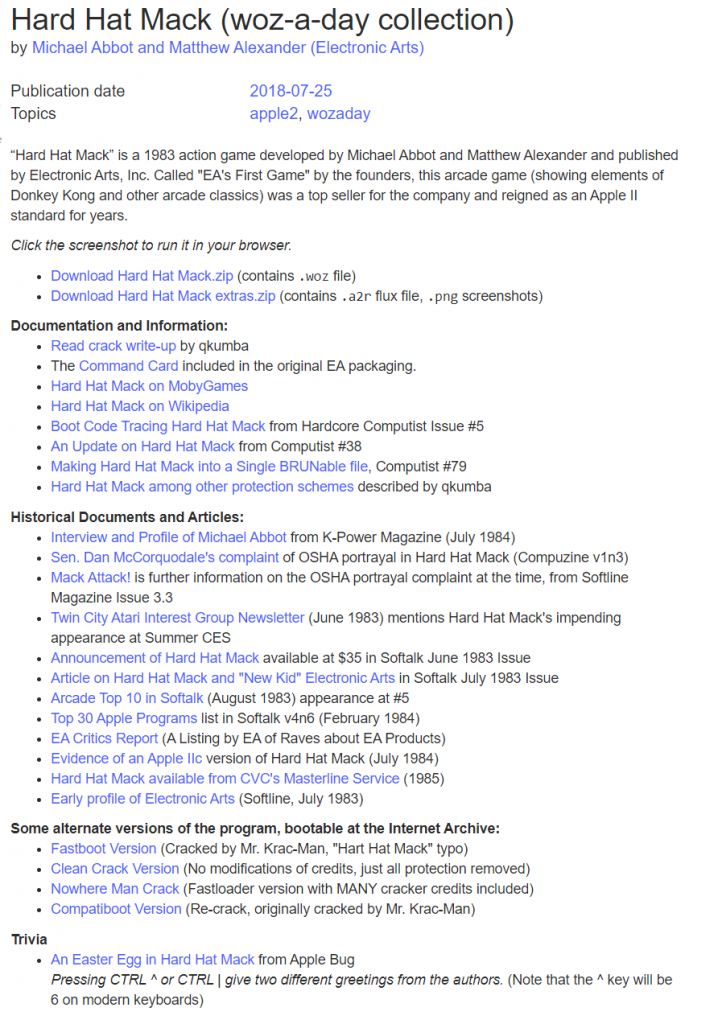
To understand what I was going for, I put in the time for Hard Hat Mack, a pretty straightforward platformer game from 1983, which has gotten the WOZ A DAY treatment. I spent time and tried to pull up everything about this game – write-ups, interviews, reviews, announcements, alternate versions and trivia. I created an item that would reveal Hard Hat Mack’s full spectrum of information and allow someone who played the game to also enjoy the world it was part of. Or, conversely, for a student or researcher to grab footholds in the history of the game.
If this sub-project started and ended with a handful of items, it’d be a success.
But there’s a lot of items.
After spending some weeks rounding up people to contribute entries in the same style of depth, tracking contributions and sharing the duties, only a handful ever got the treatment. I have mostly shut the whole thing down at this point.
So, what exactly happened?
Well, it comes down to a rather tricky situation – there are jobs/tasks that will only bring in fanatics if by fanatics you mean people being paid for their time. And those jobs/tasks will likely never get any sort of funding to do so.
They’re the worst of both worlds – profoundly boring, utterly necessary. No amount of rah-rah work, no reframing of the whole thing as a competition, “do it for the good of it” situation will obscure the fact that it is very difficult effort that should be compensated.
4am happened upon the secret – write code to do the boring parts, then make more and more parts boring; figure them out utterly, until there were no choices to make, and then code that followed those no-choice journeys thousands of times. But rich, interesting descriptions and lists of tangents are not the province of automation, yet, and so the WOZ A DAY remains as, simply, a spectacular selection of Apple II software, much of it rare as can be in the form it exists.
I could cook up some other schemes to get an army of people to do this work – fundraisers, “hackathons” and livestreams come to mind. But at the moment, things are stable, and I tried to do the experiment and have a lot of data about what worked and didn’t work in the process. We got a handful of nice items updated with their history, and I learned a lesson.
Maybe, sometimes, we take the lesson, and move on.
]]>That approach (one focus drains, another rises) is the core of how I do everything, so let me answer the curiosity of a few people who wondered why I choose what I do and how I do it.
The usual caveats: One person’s approach to life, especially as described by themselves, is an observed artwork, not a curated manual. Priorities shift and opportunities flicker and fade, and it’s not a good idea to have made your priorities or opportunities the defining (or worse, only) aspects of your life. In a year I could read all this and laugh at that deluded bastard, unaware of the Coming Thing that will make any of it irrelevant. Consider this all a gentle introspective song played in words and not a thundering drumbeat demanding you march in lock step.
I am also focusing on my Internet Archive era, not how I approached things back when I was a systems administrator and doing documentaries on the side, that is, a documentary filmmaker who administered systems to pay his travel and camera equipment costs. I’m talking about 2011 to the present.
With all that out of the way.
On a personal level, I’ve been speedrunning a game called “Die With The Least Amount Of Confusion About What To Do With Your Remaining Stuff”, and professionally, I’ve been running a project called “Die With Maximum Finished Projects Lacking Interest By Co-Workers And Reasonable Public Levels of Awareness Of My Efforts”. Both are going quite swimmingly.

It’s bright-line obvious and easy to cleave my Internet Archive era into before and after my 2017 heart attack.
I’ve described the situation at length before, even doing so onstage, and I’ve touched on the themes and lessons that came from the event. But functionally, the result was my realization of how entirely arbitrary existence is. Reality provides the experience of going from Zero to Dead with alarming frequency; but even more troubling for me was the inaccurate signaling my body provided that anything was wrong.
You would think 99% blockage of a major artery on the heart would be really really intense, a thunderstruck pain shifting all priority, but it was mostly an annoyance until it was a misery. But even the misery was just that – an ache one might get from sleeping poorly, or having eaten an undercooked potato, which I’ve done once or twice. Only with a number of experts and authorities showing me exactly how dangerously close I came to ceasing and exactly how that happened, am I even able to articulate what went on. No sense of conclusion had come to me beforehand, no overriding awareness of a chapter and possibly the entire book closing.
It was Luck, but also a Lesson. Things will shift in an instant, and I am likely to have little warning beforehand. One moment delicious meal, next moment oblivion. And with that outlook, a lot of stuff came into pretty sharp focus and a pretty deliberate roadmap came into being.
Building on what I said a couple entries ago, cleaving my possessions into items held for myself and items held in trust for others betrayed a ridiculous ratio, something on the order of 99 to 1. For every memento of a person or experience that I was keeping close, I had dozens and dozens of magazines, floppies and pieces of equipment I took on just because I was worried nobody else would make the effort. This outlook had resulted in a shipping container of materials, and when I finally put together the process of transferring most of them away, the resulting movement of material was, frankly, shocking.

Thousands of magazines went to organizations and tens of thousands of items went into the Internet Archive’s physical archives. Monitors went to museums and individuals, and gaming systems went to yet more locations. By the end of it all, I had divested so much material to more permanent homes, that it would be assumed I’d had absolutely nothing left.
And, comparatively, absolutely. It was less than a couple storage units worth, a sliver of what it was, and that description is where it remains today. In a recent consolidation effort, with a number of volunteers, a single truckload was able to take the contents of all the remaining units and put them into one, and while the view of the remaining storage unit could seem dire on first view, it is not:

A heartening sign is that a notable percentage is furniture and vintage equipment, particularly nice pieces that are not compatible with my current living situation. A good amount are books I’m either going to donate, or which I’m going to bring back to a bookshelf in my home.
And then, in an amount I will be able to better quantify soon, are the Things Held in Trust; floppy disks, cassette tapes and typewriters, materials meant to have something “done” to them, after which they will go into some manner of permanent storage away from me. This is probably the majority of non-furniture and technical object items.
The remainder are a set of what would be called my Personal Effects – papers, drawings, pamphlets, mementos and a handful of artifacts from old jobs, old experiences, mostly meant as talismans for me, personally, to be able to recall people and events that otherwise I might have a harder time to remember. How many of THOSE could stand to be just digital and then stored away with a marking to toss them if people want, is part of the near future task set.
Now, for a moment, let’s veer into Everything Else.

Sitting in three physical locations around the country are collections of what a classifier might deem “Touched by Jason Scott”, that is, I am the instigator that caused the Internet Archive to acquire materials, with an eventual goal that either the organization at large, or myself, “do something” with them.
This is a lot of material. It’s books, software, papers, videotapes, and a smidgen here and there of the kind of weird gathered up miscellany that comes when you absorb the world by the truckload. I can’t estimate how much this is. It’s probably many tons.
This is waiting for me. If I work on it alone, and single-stream, it will never be done before I am 100 years old. It’s that’s much.
Luckily, I’m not working alone. There are collections that have a general mandate to be digitized over time, and I am but one of many potential parties who may do that work. There are others that will get pulled into other larger digitization and archiving endeavors that will come along in the future, during that madness when an entity comes along saying “We want to put this truckload of cash into a digitizing effort; what do you have available to work on as a set?”
Then there’s some sets that are definitely “mine”, in terms of I advocated for them, we’re holding them, and in the expanse of time I’m the top candidate to step in and start getting them pulled into an online form. I’ll resist distraction listing their classifications and stories, but just be aware they are in big pallets in a very large set of rooms and the second I address them is the second they ultimately get addressed.

Which, ultimately, brings me back to being in my hot little rented office, digitizing whatever materials with whatever equipment is working, as fast as I can, for as many hours as I can.
Permit me to join the legions of people for whom the Pandemic was and continues to be disruptive. Besides health issues, I did not visit the Internet Archive Headquarters and most of the physical archives for years. It put a pause on my digitization and classification efforts, while no pause was put on acquisition. (The Archive actually took in dozens of entire libraries of institutions shutting down during the pandemic, literal millions of books and items.) For a lot of 2020-2022, significant portions of my pipeline and priorities went out the window. I wouldn’t call everything “normal” now, but I am proceeding with my scanning/digitizing efforts full apace now, and doing activities of assessment and interaction that would have normally been done multiple years before they actually are happening.
Here, in the present day, things have gotten understandable and quantifiable enough for me to be able to finally address piles of to-dos that are within 10 minutes of my rented office, easy to pull in, do work on, and then mail away or store locally in a “just in case” contingency. I expect by the end of this year, I will have a reasonable understanding of where things are and where they will be going.
From then, it’s rinse, repeat. Take in each new block of promises and intentions, do the work, often on a stream, and go forward until I run out of materials, time, energy or health.

That’s the priority list: Do the media and materials I have machinery for, acquire machinery to do materials that I currently can’t, exhaust my local collections, then acquire the larger to-dos from Internet Archive stores and begin doing those to the best of my abilities.
Simultaneously, be aware of the fact that since I was unable to detect life-threatening health issues until it was past too late, it’s always possible that happens again, and I leave everything in a grinding halt, halfway through a project, with all my machines humming until they crash.
At that point, I hope that that what I’ve left behind is inherently obvious, in good hands, and understandable in case someone else wants to race the doomsday clock and make more items see a digital future.
If not… well, buy a Ouija board.
]]>Here is a quick time-saving suggestion: Skip everything I’m writing down to the nice picture of the videotapes. Then read what’s after that and don’t comment.
Still here? Let’s go.

There are many things which set me off, but few have been as consistent as Nerd Bullying, especially where people who consider themselves kings of very tiny kingdoms take their knowledge and smoosh it in a bowl with their social awkwardness and lack of cue-observing and come out of the gate with a way-too-overtuned neg-throwing style and tone criticism.
By all rights, this should be a minor, almost rounding error of an experience, but part of what I do on the daily is often a process or procedure and Nerd Bullies looooove these linear steps because it’s one dimension away from a flowchart and they feel they need to add one more dimension, one more fix, before it’s either better, or perfect.
Now, of course they have no idea what minefield they’re wandering into with me, or the disproportionate response it often garners when they’re “just helping”, but that’s also because I’m translating their words on the fly:
- “Not sure if you’re aware” – Salutations, Dilettante Moron
- “Pro Tip” – I think my opinion matters so much it should be canon
- “Curious ______” – Everything after the word “curious” is always awful
- “Why are you choosing to _____” – Everything after the words “choosing to” is similarly awful
And so on.
Their weirdly-framed criticisms or “Not a question, more of a comment” ends up doing nothing to move my needle, and in a few cases, gets a profanity-laden rant they are completely unsure how they signed up for.
Therefore, when people ask/demand how I “do” things, I tend to hesitate, because instead of providing Education, I feel I am providing Ammunition.
This is all, however, my problem, not anyone else’s. Of course people stumble through life, confused and various levels of paranoid, unsure if they’re doing the right thing or oblivious to the fact they aren’t. They found solace in the churning sea of life’s short run on a floating plank of easy-to-master geekery and in their minds it becomes an island from which to send up signals of their prowess before their bad diets send them into the darkness at shockingly high numbers and shockingly low ages.
And, of course, marbled like fine steak among this crowd are some truly generous and thoughtful folks, who honestly do want your opinion on what you do, realizing that someone else’s decisions aren’t edicts or judgements on their lives and choices. They benefit hearing the footsteps of another soul’s journey and taking warmth or warning from what they observe.
It’s to these folks I am now speaking.

Let’s get something out of the way: Depending on how you count it, I have, in my inbox, roughly 100,000 videotapes to process.
With numbers like that, choices are going to be made. Choices of whether to do anything much with it, how far I’ll get along in the expanse and functional reality of time, and what exactly a by-tape approach will take. I’ve spent a lot of time and a lot of consultation to come up with what’s going on currently, and the journey is not over.
Also, the choices are going to shift over time, as new opportunities present themselves, costs or income interfere, and long-term trends with the equipment and materials come to light.
At this point, I’ve digitized roughly 2,000 tapes. Last week I digitized 60. Who knows what next month will bring. My process is a snapshot, not an immutable declaration.
What I Do And How I Do It
One of the most variant choices to make are what Codecs your final video files are going to be in.
For the tapes of value or uniqueness, I am doing Lagarith, a chonky little codec which is lossless, and then compressed. It works out to anywhere between 25-50gb an hour. It is memorably huge. It has been around a long time, and it can be converted into a mass of lossy compression schemes down the line. It leaves the most options open in that direction. It is a pain in the ass to transfer, taking hours to upload and download. I keep them interlaced, again to provide the most options later.
For tapes where I will be dealing with many thousands (think, someone has recorded years of news programs), I use various types of MPEG-4, which is lossy (drops bits in the name of saving space) but gets the information across effectively, and the notably reduced disk space usage means that having a half-million hours of programs will be within the realm of cost availability. Should a tape go by that is so incredible it will need to be ripped via Lagarith, that command will arrive someday and it will be dealt with.
I do not throw out any tapes. They are all stored after digitization.
Currently I use an analog to digital device/card called a BlackMagic Intensity Pro 4k Card, which is about $240 and which does the job very well. It is compatible with a wide range of software, does not get flustered easily, and is not a massive mystery as to how it exactly works. It can work with HDMI, Component, and S-VIDEO cables, and I use the latter two. I currently have five of these cards in use.
I don’t care about brands of cables.
I use whatever cable is generally thought of as the “best” connection between the videotape deck and the outgoing signal. In order, that’s generally HDMI -> S-VIDEO -> Component -> Composite for me. Since none of the decks I work with have HDMI conversion (nor do I want it), they almost all are S-VIDEO right now.
The cables from the BlackMagic Intensity are going either into the deck, or through a “Time Base Corrector” which is located inside of a Panasonic DMR-ES10 DVD Recorder. The cable going into the DMR is either an S-VIDEO or a Component cable, but right now it’s always an S-VIDEO going into the card because why not.
I did not always use Time-Base Correction at the beginning of my process, but I use it all the time now. When you’re dealing with terrible, terrible, terrible tapes, you want to run them through this device, which helps with the signal to make it synchronize with the sound and not drop frames in a way that the result is a broken, fuzzy, off-kilter mess. If I don’t use it, it’s simply because I am dealing with the best of the best tapes, or I recently got a deck and I haven’t purchased one. In general, I use them all the time.
Finally (on the hardware side), I use a variety of VHS and UMATIC decks, and will be adding BETAMAX and BETACAM decks as well in the future. In general, I go for brands that are either well-regarded, or passable with my being given them for free playing a part.
Right now, the weirdest decks I use are SONY SVO-9500MD decks, which normally go inside MRI machines. They have very, very, very capability and they’re built like tanks. Someone who donated one to me had gotten it, and his insight caused me to love this model type very much.
I also use some variation of JVC S9600U SsVHS machines, because they have a lot of circuitry inside to take absolutely terrible tapes and make them look better. When I was dealing with bootleg rock tapes that are on their 3rd-5th generation, this makes a difference.
For the UMATIC tapes, I’m currently working with a SONY VP-5000 machine. This machine is hell on earth to work with, but when it all comes together, the image and output is very nice. The JVC and 9500MD decks put out SVIDEO, while this VP-5000 puts out a BNC connection I convert to component into the Time-Base Corrector.
Now you know the “Hardware Chain”.
For software, I am currently using Virtualdub, which is a rather old piece of video processing software, but which works very well for the straightforward “take in what’s coming on the BlackMagic card, and turn it into a file”. I can run two of it on a single Windows machine, with two BlackMagic cards in it. When I’m done with the files, I can use a third instance of Virtualdub to crop either side of the recording so I don’t have minutes (or hours) of blank space being stored in the file. So, in this way, Virtualdub is both a capture, and a finisher.
I do not process the files further. I do not de-interlace. I do not convert them to another codec beyond Lagarith. I put them on USB drives and I upload them as is, with the filenames as the metadata that was written on the tapes, if any.
Again, for the more “Tape to File” mindsets:
- VHS or UMATIC Tape
- Sony SVO-9500MD or JVC S9600U SVHS, or SONY VP-5000 UMATIC
- Connected via SVIDEO or Component Cable to Time Base Corrector
- Panasonic DMR-ES10 DVD Recorder being used as a pass-through Time Base Corrector
- S-VIDEO and the Audio Cables into a BlackMagic Intensity Pro 4k Card for each Deck
- Capturing video via Virtualdub for each card, running in Windows 10 or 11
- Lagarith Codec, Nothing Special Added,
- Cropped via Virtualdub and uploaded with Filename as Metadata
This is how I do, and this is how I do it.
Philosophy
Come back in a year, and I may have changed any part of this – this is not a final decision with no negotiation, although I have talked to more people than most might expect, and the choices here come from a real place and aren’t random.
The tapes are not thrown out, and can be revisited. I do not let myself worry that I get one shot with the tapes – in almost all cases, I’m going after tapes that would never have seen any treatment at all, so what I’m doing in the aggregate is already better than expected.
This is all very hard on the decks. I expect to go through many along the way. I do not throw them out when they break, yet, and will see what goes on.
My experience is USB digitizers (you plug the video into a little device, and the little device goes into a USB port) are not dependable.
Everything I digitize, I share immediately. People find errors and I have fixed them.
I am focused on doing the same thing decently enough 100,000 times, not doing a tiny handful of things perfectly. If you have 20 tapes to work with, no doubt you’ll be different. You may be different all the way down, in fact. Have a ball. Don’t tell me.
]]>So let’s begin at the beginning, again.
My parents’ divorce, taking place in the realm of the beginning of the 1980s, was not in any way friendly and in fact rather contentious. I wasn’t yet a teenager, and I was the oldest, and most notable for the purposes of this story, my mother gathered up her children and scooted off to first a hotel and then a location with family, without telling my father where she had taken us. In modern parlance, the term is “child abduction”, although I’m sure my mother didn’t think that’s what she was doing. Ultimately, connections were made, a nasty divorce proceeding happened, nobody was shot, stabbed, restrained, or attacked.
But in many presentations I’ve given, I mark the moment of being scuttled out of the family home into the great unknown of Outside The Neighborhood as being when my focus and awareness of the world fundamentally changed, because as she put things into the station wagon and tearfully told her kids to get ready to go, she also asked us to take what we needed. Which is a difficult question for someone in the realm of ten years old.
I needed a blanket and my dog.
Woven into the simple declaration take what you need are a host of world and perspective-changing understandings of what you and need are. Let’s not overplay the trauma aspect of it all, and focus on the concepts being dropped on me and my siblings, which first and foremost is a crumbling of rock-solid foundations. Foundations of family, to be sure, but also possession, consistency and location. Home was no longer an immutable realm, but split into multiple locations, one inevitably a favorite, with the other a shadow of the concept of home. Possessions stopped becoming things you could walk out of sight from and be a hundred percent sure (maybe 90-95 percent sure) they’d be there when you came back. And most effective on me was the idea that lack of effort to maintain the talismans and protocols of representation would result in a void. Put more simply: You’re the keeper of yourself and of what matters. There is no consistency that will protect you.
Like a lot of knowledge, this came at some level of heavy price, although I again stress the price is one many others pay at much greater cost. The fact remains that both my parents bent over backwards to provide opportunities, to ensure comfort and food and connection as best they could, and while I can sit back in my fifties and leave notes as to my parents’ actions in their thirties, my own thirties were spent in hacker conventions, shooting films and stumbling through my own home life, so I’m quite the unqualified judge.
This is all to say that when Chris Boufford showed me an acoustic modem in his grandparents’ spare room and how, by calling another number in Mount Kisco and putting the receiver of the phone into a cradle you’d suddenly get words on the screen, I had lived a life up to that point where two thoughts came almost simultaneously:
This is amazing.
I need to save this before it inevitably disappears.
I couldn’t have known that in the years afterwards, I would in fact collect so many artifacts from this thing, this concept of the Bulletin Board System, that I’d meet many of the people responsible for it existing, that this pile of artifacts would get a name and a branding, and that I’d collect it all so hard that I’d end up being associated with the concept of it for a lifetime. But I definitely understood, taught as I was during that painful childhood lesson, that inaction would be tantamount to approving its destruction and disappearance.
Calling as I did to many BBSes in my teen years, I’d focus on the textfiles, the message bases, the downloadable files, because they felt, I think, like special missives from beyond my little life and easily kept on floppy disks. When disks were the main way to store computer data for home users, you would encounter two kinds of people: folks who kept a small, special set of floppies representing what they needed, and others who had vast, terrifyingly large collections representing not what they needed but what they thought should be held in trust. I’ve gone through a lot of these collections over the years, and have seen rooms full of these things, hundreds and sometimes thousands, representing homemade bunkers of data. I had my own bunker, and while it was only a few dozen, the relative smallness of textfiles meant that each disk could hold many, many examples of these artifacts I thought deserved whatever long life I could provide.
At what point does a hoarder of data, driven by a sense of loss and of fear of same, turn from a mere accumulation of piles and end up with something resembling an archive?
I can point to various choices I was making in my teenage years with textfiles as the whole endeavor being more than just a private copy of things I liked: creating capsule descriptions of the textfiles for my own BBS, giving them unique extensions (HUM, PHK, HAC, PRO) to classify them in general genre headers, and attempting to keep the authorship and context of the files in the form of “buffers”, just saving all the output of a BBS to keep a record of where the files came from. I can find in my stacks actual essays I’d written about what these files were, and throwing my own writings in amongst everyone else’s so my own works wouldn’t be lost.
My college years were where all of it could easily have come to naught. New city, new goals, explorations and discovering my new set of interests could have led to my younger days and their collections being scattered to the wind. In a series of lucky maneuvers and chances across that period, I did not lose my textfiles and floppies and printouts, and they persisted for about 8 years in my hands and in the hands of a friend, David Weinstock, who kept things I was “done with” and critically asked me if I wanted them back. And by the time he asked, I did want them back. My own collection and archive, itself, came at the same risk of entropy and disappearance but the spinning wheel fell on “save” and I had them all again.
In my twenties is when I start creating The Warrens.
I don’t have a lot of handy photos of all the Warrens, and maybe that’s a compilation I need to add back here as I find them again. But over and over again, I turn wherever I’m living, or a single room within it, into a cramped, filled-to-the-brim, often deeply concerning space of materials. These will be favorite books, personal collections of memories, computer hardware and software, and an ever-growing set of amusements and pieces into my own functioning workspace. “Work”, in many cases, being the day-to-day activities of a geek browsing online things or playing with some sort of toy or tool, but surrounded by all the possibilities and options at arm’s length should my shifting focus switch to a new attraction.
I create Warrens a lot. Casting my net backwards, I count six of them, and each one a tiring memory to me, as I consider how much effort it took to build them up, and then inevitably pull them apart.

While it’s fundamentally silly to think each Warren was going to be the absolute last, there was definitely an approach and plan with each one to improve what came before. Bins instead of piles, thematic groupings instead of simple shelves of one kind of medium, and so on. Ultimately, though, they all have had flaws and they’ve all had a lifespan. My life changes and the Warrens soon collapse like a circus tent and travel to the next stop.
The site called TEXTFILES.COM caused me to regard not only my collection but the contributions of others, and the resulting documentary that I shot about bulletin board systems put me in a lot of homes with a lot of similar Warrens, and somewhere along that continuum, I found myself constructing an awareness of the types of items being collected by me and others, and giving them classifications. In more and more cases, I started to take on others’ collections as well, which forced me to think about it even harder.
Here’s what a few decades of this cobbled together in my mind:
When we end up with our physical and digital piles of material, there’s a couple grand classifications that help parse what we’ve got, and for some folks, they need this to process the next steps to take, especially if they’re overwhelmed. And those classifications are things that are you, things held in trust, and things held in indifference.
Things that are you tends to be stuff that you’ve created, be it writings, photos or saved data that represents projects or memories, and which is relevant as your trail of effect through your lived life. E-mails you’ve written, images you’ve made, and the inevitable works we consciously or unconsciously create as people. These items are not necessarily precious, but they are often rare – you have the only copy or item, only you maintain it. And in fact, only you may see any value in it or understand what it is.
Things held in trust are items that may or may not have deep meaning or relevance to you, but which you acquired from without – the downloaded programs, or bought books, or a six-foot statue you won an auction for years ago. You didn’t make these things, and there may be many copies of them, or you again might have the only one: but if they’re not part of your functioning life, then I consider them “held in trust”, as a caretaker keeps maintaining a garden or structure, towards some future.
Things held in indifference are all those pieces of life that acquire around a certain personality – ranging from discarded envelopes from packages you got, to motherboards and loose screws from machines long gone and pamphlets from trips and travel that you shoved into a suitcase and then forgot about. Some personality types (say, someone who remembers that time long ago he had to give up everything to take what he needed) might impulsively acquire things and then forget about them almost immediately. These collections can overlap with the items held in trust or the things that are the person’s own creations, as well.
When I give advice to people on what to do when they wake up one day and realize they have 2,000 CD-ROMs or piles of magazines they’ll never read, or stacks of VHS tapes of shows they bought 20 years ago and now will never watch, is help them reach the “end of the story”. People want a story, and they want the story to have a happy ending. I advise them on how to frame that story:
..but then, after asking a number of message boards and confidantes about what to do about this multi-gigabyte zip of Wojacks, the collector uploaded them to a website, finally resting knowing this long-gathered precious trust of meme juice would survive another generation. The End.
..but in a shocking twist, it turned out there was a weirdo working for an Archive of the Internet who wanted these stacks of CD-ROMs and floppies, and they offered a home which immediately cleared up that part of the garage, allowing the lawnmower to finally be stored inside, The End.
…having discovered that there are plenty of National Geographic issues to go around and there was no need to keep them around, our hero contacted a local old folks’ home and donated them to the residents’ library, where they were happily passed around and enjoyed for years to come. The End.

What is now past a decade working for the Internet Archive has meant that I’m working in both physical and digital concerns, and each one has challenges and its own peculiar qualities. Millions of items are being shipped to large warehouses controlled by Internet Archive, and millions of files and “items” are being added to the online presence. In some cases, they live in both places, existing in boxes in pallets in shipping containers in rooms in a building, and also inside a .zip file inside an identifier inside a search result on a website.
I’ve concocted ideas, then, on Archiving.
It’s probably as good a time as now to say that I am not universally beloved as a figure or authority. I am not a professionally trained archivist, but I’ve spent my entire life somewhere in the discipline, and it is not hard, if you seek them out, to find people who consider my very existence in the field to be a cavalcade of gaps in judgement by the world and by, perhaps, destiny itself. Why, in a world overflowing with top-notch expertise by individuals educated by some of the finest academic programs and concerns, would this street-wise dandy be considered the one to listen to?
Well, for one thing, I’m fuckin’ hilarious. But I also think it’s because I come to a lot of my conclusions and efforts from the point of view of ad-hoc need and not because I read somewhere that it’s where I should be putting my resources towards. I made a documentary about bulletin boards because I was concerned many of these people would die and there’d be no record of them and their perspective; and I was right. Doing this work put me in touch with lives and people who had collections that lacked a specific interest by established institutions, and so I was the one who helped keep them around, or even take them personally. And when the time came for me to join forces with Internet Archive, I was already strongly my own thing and it was a partnership, not a subsumption.
And so from this situation comes a pile of general credos and rules of thumb I’ve picked up in my travels:
Where possible, save the original. Where possible, digitize the original or maintain a digital copy. Ephemera and transient content is just as important to maintain as products and projects. Digitize at the highest resolution and fidelity possible, but realize you’re never going to get it perfect and keep the originals around, if you can. Make digital copies as widely available as possible, all the time, so it finds its value to people seeking it.
It seems pretty basic stuff, but some of it is hotly contested and virtual ink spilled by the gallon about process, style and considerations along the way. It’s what works for me, and on the whole, it’s been a succcess.
In this world-view, one of the critical parts of the whole aspect of “archiving” is making that digital copy of something physical or analog, using tools and equipment to do so. Naturally, “Born Digital” items merely need to be kept around and maintained, but items that are sitting in another medium or container need to make the leap over the Air Gap into virtual/digital reality and that’s where it gets complicated.
I’ve been asked, in all manner of ways, what the most difficult part of the process is – is it tracking down items to work on, or finding the right order, or devising which video container codec is best for a ripping of a VHS tape, the DPI of a paper scan, or which equipment stack is best for the job?
No, none of that.
It’s the crushing loneliness.
It’s the functional experience of facing down a pile of things that are in one format, and doing whatever steps are taken, over and over, to convert them into another form: the loading of the papers into the feed reader, the stacking of CD-ROMs into a ripping device, the constant movements of putting tapes into tape players and turning the capturing software on and off, typing in the filenames with metadata information as it’s done. Doing it endlessly, facing down hundreds and sometimes thousands of components in a single “collection” with lots of potential for mistakes, do-overs, unexpected failures, and all the bumps in the road for what seems like a very straightforward task.
It’s slowly grinding through a backlog of promises and easily-said agreements to turn This into That, and then finding hours, days, and weeks of your life drained out of you, resulting in barely enough data to fill a percentage of a modern hard drive.
The secret-not-so-secret is a lot of this work falls under “it should be paid for”, because it requires just enough mental capacity as to not be automation-ready, but the minute-to-minute joy of it is absolutely minimal, repetitive, and only enjoyable in the rear view mirror looking back at all the stuff you did. The occasional bright gem of something truly interesting and weird won’t make up for the hundreds of times you’ll be getting a necessary but basic item hoisted into digital, and after enough time, you just wear out.
When I started digitizing VHS tapes en masse, I did a bunch of research and asking a number of people how they approached the task, and an interesting theme of conclusions came out: Most were working with a specific set of items, and most of them burnt out after 20 to 50 tapes. Almost nobody went past that amount, even when they had many more to do.
My solution, then, was to Stream.
For the years I’ve been doing the fundamentally boring VHS and U-Matic tape ripping as part of my projects, I’ve almost always had a stream going on Twitch. It’s at https://twitch.tv/textfiles and it has ranged from a non-camera showing of what was being digitized to a full-on just-short-of-a-televised-show experience, while I move through piles of cassettes stacked to the ceiling from donated sets.
In this way, I’ve digitized (at this juncture) over two thousand videotapes, with many more to come.

The initial work was being done out of my actual apartment, which made sense until it really, really didn’t.
The nature of this sort of project is spare parts, awaiting cardboard boxes, and a mildew smell that starts to hit you when you walk in. At some phase of life, this is tolerable, but just like separating things that are you from things held in trust, it’s better to have a dedicated workshop away from a living space.
So, I started renting an office.
It’s in one of those facilities where they have dozens of rental rooms and has a set of group amenities like a kitchen, copy room, and even meeting rooms. Obviously, it cost more than just stuffing everything into my home, but the separation has turned out to be particularly healthy, both in terms of knowing what lying around is my own stuff, and what is destined for long-term storage after being digitized.
After consulting with my friend Kyle, I re-imagined the entire “streaming” approach to be focused on the image, and having it both look good, and look informative. The result is striking:

People have asked what the huge monitor is, behind me. I’ll answer that one straight off – it’s a cheap LCD TV, purchased for my apartment and long-since superseded by others but still working enough to look fine on a camera. The lighting is from two $25 LED lights designed for the purpose, along with a webcam aimed down the maw of the U-Matic tape device, since I have to keep the top off anyway (constant cleaning). The camera recording me is a mirrorless DSLR (a few hundred dollars) in constant monitor mode, and sending it all to a HDMI-to-USB Camlink.
Some time in the future, let me go into further detail of The Setup and the Toolchain, which a certain segment of audience can’t get enough of, and another can’t stand a smidgen of.
Instead, let me say that what’s obvious, looking in the context of my full life with this endeavor, is that I’ve built yet another Warren.

Cameras and framing are very deceiving. The room is tiny, barely 70 square feet. The day I toured the facility and was sent the stack of paper I needed to sign up for a year of long-term residence, they included a “typical” picture, which is either my office or the one next to it, and the difference is striking:
Because of the equipment, it runs very hot in there. Because I’ve got all the projects going on from so many sources, it’s also a bit noisy. Filters on my studio microphone prevent my audience from hearing the never-ending humming.
Composing the dull, generic room that I was given into the cyber-scape of fluorescent dreams that now appears on the Twitch stream has been a multi-year project. Tapes and other products move in, get processed, boxed up, shipped out. Streams have been a few minutes or many hours, depending on what I’m focused on and what time permits. And because I have a dedicated space, I can be very loud, very intense, and be able to speak freely on subjects without worrying I’m ruining anyone’s living conditions or sleep. It has worked spectacularly.
But again, the real purpose of this Warren is to share – to share with people online (thousands of them, over the years) with what I’m up to, to have conversations or debates through chat and phones, and to be able to conduct myself in a way that doesn’t feel like a prison sentence, even if the space I’m functioning in resembles a jail cell a little too much.
I know this set of decisions and designs is not for everyone. Not everyone wants to yammer constantly while doing their job to a shifting, weird audience of onlookers. Not everyone feels they need multi-colored lights and a massive background video to conduct themselves, but not everyone is processing thousands of videotapes all their waking hours, with a dreary consistency that would have long-ago wrenched all joy and delight from the occasional discoveries. Even with my motivations to archive and share being life-long, and my individual cramped spaces being laboratories that I use to experiment and improve my processes, it turns out that isolation didn’t give me focus – audiences do.
Here, in the contemporary time of my archiving life, really an archiving lifetime, is me now trying to turn the promise of endless stacks of media and materials into digital form, to make them reachable to the world, before something, and there’s more than a few somethings up to the task, takes me out of the game. It’s a life born of a tragedy, but that tragedy caused perspective, and that perspective has given me an awareness of how much has been done and how much is left to do.
From my cramped Warren launches hundreds of recorded moments, and maybe, with the help of a kind set of eyes, I’ll get a lot more of the work ahead done.
The twitch stream is at https://twitch.tv/textfiles. See you there.
]]>What I discovered, this late in life, is I turn everything into an inbox. Again, I’m not sure this is going to change your existence or opinion in any way, but here we are.
In the dim mists of decades ago, I appear to have launched into a serialization of projects that I’ve never recovered from, making piles of to-dos and tasks and then attacking them, often at the expense of all else, for hours and hours. The earliest efforts of what became TEXTFILES.COM was me gathering textfiles from all sorts of bulletin board systems, logging in to grab copies and take text-based snapshots of what was there, then dragging it home into piles of floppy disks, with the goal of…. well, something. I started calling the disks “The Works, Disk _____” as I visualized, at 13, that I would one day have a BBS called The Works and these disks would be the starting seed vault that it would grow from. The fact this happened is quite remarkable to me, but it happened. The Works BBS under Jason became the Works BBS under David and then Matt and then Others, and I then took the textfiles of The Works BBS and it became a site, itself a collection of descriptions that came because I created a second Inbox, one of describing roughly 50,000 files by myself.
That all seems like a rather straightforward observation, except it turns out that nearly everything I am doing, in all situations, has become an inbox, a collection of waiting piles of transferred or fetched tasks that require some sort of response, acknowledgement, or process as a result.
All this to say, that’s why this weblog hasn’t seen a real update in years.
The dark side of a Life of Inbox is that if some inboxes are more pressing or easier to process, other inboxes fall by the wayside, because they either require Deep Thought or otherwise need my full attention, and my full attention has become a rare commodity indeed.
I started this site for, essentially, Essays. Thoughts that would be best explained in detail, and then referenced over time, where people could pick them apart or talk about them, or be able to explain my motivations or efforts in a laid-back, slow-cooked, contemplative fashion instead of the hottest bon mot to fly out of my keyboard. And for years, it was definitely that.
Two things took that away.
First, the Podcast turned into a receptacle for both my essays, and presentations I might give; 12-20 minute compositions about subjects I thought needed covering, offered in a way that both reached people, and allowed, through a Patreon, to help cover my debts and money issues over the years. For both those situations, it has been a runaway success – my debts are basically paid (although I do get costs like medical that crop up, and taxes still continue to be a bother), and I’m happy with the subjects I’ve dove into across over 200 episodes, which is a lot of episodes to be sure.
Second, social media is a very nice way to construct a simple outlook, a shallow formed snowball from some half-cooked ideals, and throw them into the public sphere. And that’s been fascinating in its own right, and led to crushing lows and exhilarating highs. I’ve been lambasted, treated like royalty, and made amazing connections via the various to-the-minute inboxes they represent.
But with the very real, very actual spiral of Twitter, one of my inboxes has cleared up with a puff of poorly-administrated smoke. Because of architectural changes, I’m no longer getting what the folks call “engagement” in a meaningful way, and Mastodon, where I find myself living as well, does not encourage the multiple-dives-a-day energy of Twitter (for the better of all, to be honest).
So, back comes this weblog, with the 2020s in full swing and the world grinding along, and it’s nice to be back. I try not to cover old ground unless it’s needed, so the Rule of Essays continues.
Let’s go.
]]>

There’s already a collection of them up, from when I first set out to do this. Called “The BBS Documentary Archive“, it’s currently 32 items from various interviews, including a few clip farms and full interviews of a bunch of people who sat with me back in the years of 2002-2004 to talk about all matter of technology and bulletin board history.
That collection, as it currently stands, is a bit of an incomplete mess. Over the course of this project, it will become a lot less so. I’ll be adding every minute of tape I can recover from my storage, as well as fixing up metadata where possible. Naturally you will be asked to help as well.

A bit of background for people coming into this cold: I shot a movie called “BBS: The Documentary” which ended up being an eight episode mini-series. It tried to be the first and ultimately the last large documentary about bulletin board systems, those machines hooked up to phone lines that lived far and wide from roughly 1978-2000s. They were brilliant and weird and they’re one of the major examples of life going online. They laid the foundation for a population that used the Internet and the Web, and I think they’re terribly interesting.
I was worried that we were going to never get The Documentary On BBSes and so I ended up making it. It’s already 10 years and change since the movie came out, and there’s not been another BBS Documentary, so I guess this is it. My movie was very North American-centric and didn’t go into blistering detail about Your Local BBS Scene, and some people resented that, but I stand by both decisions; just getting the whole thing done required a level of effort and energy I’m sure I’m not capable of any more.
Anyway, I’m very proud of that movie.

I’m also proud of the breadth of interviews – people who pioneered BBSes in the 1970s, folks who played around in scenes both infamous and obscure, and experts in areas of this story that would never, ever have been interviewed by any other production. This movie has everything: Vinton Cerf (co-creator of the Internet) along with legends of Fidonet like Tom Jennings and Ken Kaplan and even John Madill, who drew the FidoNet dog logo. We’ve got ANSI kids and Apple II crackers and writers of a mass of the most popular BBS software packages. The creator of .QWK packets and multiple members of the Cult of the Dead Cow. There’s so much covered here that I just think would never, ever be immortalized otherwise.
And the movie came out, and it sold really well, and I open licensed it, and people discover it every day and play it on YouTube or pull out the package and play the original DVDs. It’s a part of culture, and I’m just so darn proud of it.

Part of the reason the movie is watchable is because I took the 250 hours of footage and made it 7.5 hours in total. Otherwise… well….
…unless, of course, you’re a maniac, and you want to watch me talking with people about subjects decades in the past and either having it go really well or fall completely apart. The shortest interview is 8 minutes. The longest is five hours. There’s legions of knowledge touched on in these conversations, stuff that can be a starting port for a bunch of research that would otherwise be out of options to even find what the words are.

Now, a little word about self-doubt.
When I first starting uploading hours of footage of BBS Documentary interviews to the Internet Archive, I was doing it from my old job, and I had a lot going on. I’d not done much direct work with Internet Archive and didn’t know anything going on behind the scenes or how things worked or frankly much about the organization in any meaningful amount. I just did it, and sent along something like 20 hours of footage. Things were looking good.
Then, reviews.
Some people started writing a few scathing responses to the uploads, pointing out how rough they were, my speech patterns, the interview style, and so on. Somehow, I let that get into my head, and so, with so much else to do, I basically walked away from it.

12 years later (12 years!) I’m back, and circumstances have changed.
I work for the Archive, I’ve uploaded hundreds of terabytes of stuff, and the BBS documentary rests easily on its laurels of being a worthwhile production. Comments by randos about how they wish I’d done some prettify-ing of the documentary “raw” footage don’t even register. I’ve had to swim upstream through a cascade of poor responses to things I’ve done in public since then – they don’t get at me. It took some time to get to this place of comfort, which is why I bring it up. For people who think of me as some bulletproof soul, let it be known that “even I” had to work up to that level, even when sitting on something like BBS Documentary and years of accomplishment. And those randos? Never heard from them again.
The interview style I used in the documentary raw footage should be noted because it’s deliberate: they’re conversations. I sometimes talk as much as the subjects. It quickly became obvious that people in this situation of describing BBS history would have aspects that were crystal clear, but would also have a thousand little aspects lost in fuzzy clouds of memory. As I’d been studying BBSes intensely for years at this point, it would often take me telling them some story (and often the same stories) to trigger a long-dormant tale that they would fly with. In many cases, you can see me shut up the second people talk, because that was why I was talking in the first place. I should have known people might not get that, and I shouldn’t have listened to them so long ago.
And from these conversations come stories and insights that are priceless. Folks who lived this life in their distant youth have all sorts of perspectives on this odd computer world and it’s just amazing that I have this place and collection to give them back to you.
But it will still need your help.
Here’s the request.
I lived this stupid thing; I really, really want to focus on putting a whole bunch of commitments to bed. Running the MiniDV recorder is not too hard for me, and neither is the basic uploading process, which I’ve refined over the years. But having to listen to myself for hundreds of hours using whatever time I have on earth left… it doesn’t appeal to me at all.
And what I really don’t want to do, beyond listening to myself, is enter the endless amount of potential metadata, especially about content. I might be inspired to here and there, especially with old friends or interviews I find joyful every time I see them again. But I can’t see myself doing this for everything and I think metadata on a “subjects covered” and “when was this all held” is vital for the collection having use. So I need volunteers to help me. I run a Discord server that communicates with people collaborating with me and I have a bunch of other ways to be reached. I’m asking for help here – turning this all into something useful beyond just existing is a vital step that I think everyone can contribute to.
If you think you can help with that, please step forward.
Otherwise… step back – a lot of BBS history is about to go online.

]]>
I got pulled into this whole thing randomly, when someone wrote me to let me know it was going along. Naturally, I fired into it all with all cylinders, but after a while, I figured out very good people were already on it, by days, and so I don’t actually have to do much of anything. That works for me.
It went down like this.
MOS Technology designed the 6502 chip which was in a mass of home computers in the 1970s and 1980s. (And is still being sold today.) The company, founded in 1969, was purchased in 1976 by Commodore (they of the 64 and Amiga) and became their chip production arm. A lot of the nitty gritty details are in the Wikipedia page for MOS. This company, now a subsidiary, lived a little life in Pennsylvania throughout the 1980s as part of the Commodore family. I assume people went to work, designed things, parked in the parking lot, checked out prototypes, responded to crazy Commodore administration requests… the usual.
In 1994, Commodore went out of business and its pieces bought by various groups. In the case of the MOS Technology building, it was purchased by various management and probably a little outside investment, and became a new company, called GMT Microelectronics. GMT did whatever companies like that do, until 2001, when they were shut down by the Environmental Protection Agency because it turns out they kind of contaminated the groundwater and didn’t clean it up very well.
Then the building sat, a memory to people who cared about the 6502 (like me), to former employees, and probably nobody else.
Now, welcome to 2017!

The building has gotten a new owner who wants to turn the property into something useful. To do this, they basically have to empty it, raze the building the ground, clean the ground, and then build a new building. Bravo, developer. Remember, this building has sat for 16 years, unwanted and unused.

The sign from the GMT days still sits outside, unchanged and just aged from when the building was once that business. Life has certainly gone on. By the way, these photos are all from Doug Crawford of the Vintage Computing Federation, who took this tour in late 2017.
Inside, as expected, it is a graffiti and firepit shitshow, the result of years of kids and others camping out in the building’s skeletal remains and probably whiling away the weekends hanging out.



And along with these pleasant scenes of decay and loss are some others involving what Doug thought were “Calcium Deposits” and which I personally interpret as maybe I never need to set foot in this building at any point in my future life and probably will have to burn any clothing I wear should I do so.


But damn if Doug didn’t make the journey into this environmentally problematic deathtrap to document it, and he even brought a guest of some reknown related to Commodore history: Bil Herd, one of the designers of the Commodore 128.

So, here’s what I want to get to: In this long-abandoned building, decades past prime and the province of trespassers and neglect, there turns out to have been quite a bit of Commodore history lying about.



There’s unquestionably some unusually neat items here – old printed documentation, chip wafers, and those magnetic tapes of who knows what; maybe design or something else that needed storage.
So here’s the thing; the person who was cleaning up this building for demolishing was put into some really weird situations – he wanted people to know this was here, and maybe offer it up to collectors, but as the blowback happened from folks when he revealed he’d been throwing stuff out, he was thrown into a defensive position and ultimately ended up sticking with looking into selling it, like salvage.
I think there’s two lessons here:
- There’s no question there’s caches of materials out there, be they in old corporate offices, warehouses, storerooms, or what have you, that are likely precious windows into bygone technology. There’s an important lesson in not assuming “everything” is gone and maybe digging a bit deeper. That means contacting places, inquiring with simple non-badgering questions, and being known as someone interested in some aspect of history so people might contact you about opportunities going forward.
- Being a shouty toolbox about these opportunities will not improve the situation.
I am lucky enough to be offered a lot of neat materials in a given month; people contact me about boxes, rooms and piles that they’re not sure what the right steps are. They don’t want to be lectured or shouted at; they want ideas and support as they work out their relationship to the material. These are often commercial products now long-gone and there’s a narrative that old automatically means “payday at auction” and that may or may not be true; but it’s a very compelling narrative, especially when times are hard.
So much has been saved and yes, a lot has been lost. But if the creators of the 6502 can have wafers and materials sitting around for 20 years after the company closed, I think there’s some brightness on the horizon for a lot of other “lost” materials as well.
]]>There’s a Patreon for the podcast with more information here.
Let me unpack a little of the thinking.

Through the last seven years, since I moved back to NY, I’ve had pretty variant experiences of debt or huge costs weighing me down. Previously, I was making some serious income from a unix admin job, and my spending was direct but pretty limited. Since then, even with full-time employment (and I mean, seriously, a dream job), I’ve made some grandiose mistakes with taxes, bills and tracking down old obligations that means I have some notable costs floating in the background.
Compound that with a new home I’ve moved to with real landlords that aren’t family and a general desire to clean up my life, and I realized I needed some way to make extra money that will just drop directly into the bill pit, never to really pass into my hands.
How, then, to do this?
I work very long hours for the Internet Archive, and I am making a huge difference in the world working for them. It wouldn’t be right or useful for me to take on any other job. I also don’t want to be doing something like making “stuff” that I sell or otherwise speculate into some market. Leave aside I have these documentaries to finish, and time has to be short.
Then take into account that I can no longer afford to drop money going to anything other than a small handful of conferences that aren’t local to me (the NY-CT-NJ Tri-State area), and that people really like the presentations I give.
So, I thought, how about me giving basically a presentation once a week? What if I recorded me giving a sort of fireside chat or conversational presentation about subjects I would normally give on the road, but make them into a downloadable podcast? Then, I hope, everyone would be happy: fans get a presentation. I get away from begging for money to pay off debts. I get to refine my speaking skills. And maybe the world gets something fun out of the whole deal.
Enter a podcast, funded by a Patreon.
The title: Jason Talks His Way Out of It, my attempt to write down my debts and share the stories and thoughts I have.
I announced the Patreon on my 47th birthday. Within 24 hours, about 100 people had signed up, paying some small amount (or not small, in some cases) for each published episode. I had a goal of $250/episode to make it worthwhile, and we passed that handily. So it’s happening.

I recorded a prototype episode, and that’s up there, and the first episode of the series drops Monday. These are story-based presentations roughly 30 minutes long apiece, and I will continue to do them as long as it makes sense to.
Public speaking is something I’ve done for many, many years, and I enjoy it, and I get comments that people enjoy them very much. My presentation on That Awesome Time I Was Sued for Two Billion Dollars has passed 800,000 views on the various copies online.
I spent $40 improving my sound setup, which should work for the time being. (I already had a nice microphone and a SSD-based laptop which won’t add sound to the room.) I’m going to have a growing list of topics I’ll work from, and I’ll stay in communication with the patrons.
Let’s see what this brings.
One other thing: Moving to the new home means that a lot of quality of life issues have been fixed, and my goal is to really shoot forward finishing those two documentaries I owe people. I want them done as much as everyone else! And with less looming bills and debts in my life, it’ll be all I want to do.
So, back the new podcast if you’d like. It’ll help a lot.
]]>





